This post may contain affiliate links. This just means I may receive a small commission at no extra cost to you for helping them promote their product or service. I don’t endorse any services I don’t personally use or recommend.
Can you self-drive an epic safari in Uganda? We did. And our Uganda road trip definitely cost us less than the packaged tours. This blog post will guide you on this incredible self-propelled journey from car rental to route planning.
Uganda is absolutely heaving with wildlife. Sure, it doesn’t have the Big 5, but trading Rhinos for Mountain Gorillas seems like a fair deal. Every East African nation brings something to the table: Rwanda is a master of cities, Kenya with the Great Migration, and Tanzania with an astounding diversity in culture, wildlife, and cuisine. Uganda, however, is a budget-friendly jungle paradise. The greenest country in East Africa. From thick forests to high-altitude mountains, Uganda hosts a diversity of landscapes that are sure to impress. But it’s not lacking in wildlife either. Some of my very favorite national parks are within this country’s borders.
If you plan to visit only one country in East Africa, I encourage you to choose Uganda. This guide will show you how to best experience the quaint towns, vibrant culture, and plethora of wildlife without having to book a packaged safari.
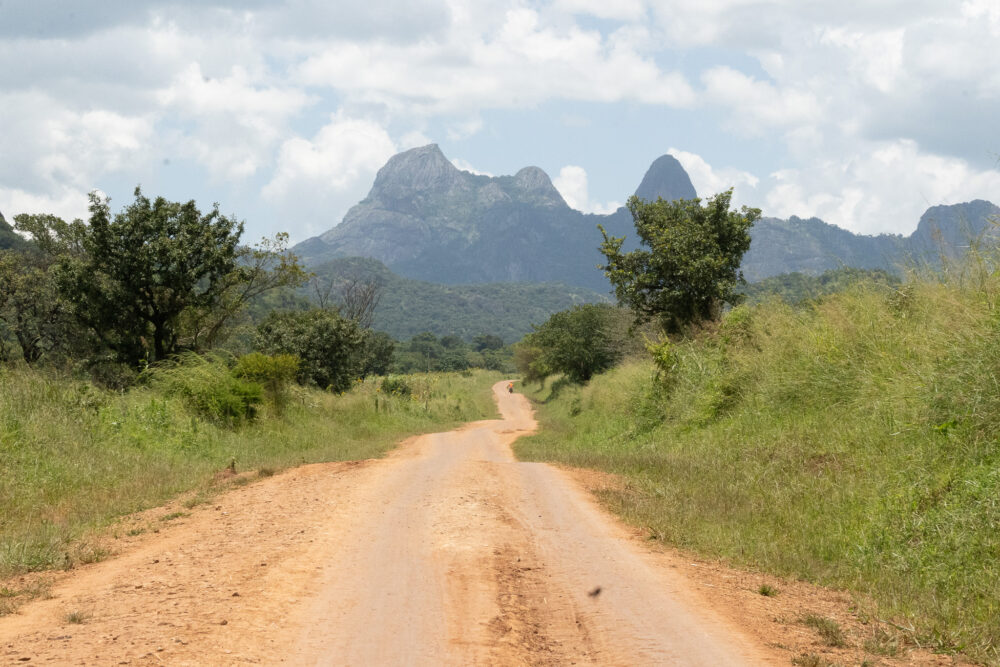
I won’t claim this is the cheapest way to see Uganda. Backpackers will obviously find buses more economical (albeit wildly uncomfortable). But this is a unique way to see the country, and it opens a lot of doors to exploration in places that most tourists cannot visit with buses and public transport alone. Check out the cost breakdown at the end of the blog post to get an idea of how much a self-drive road trip through Uganda might cost compared to budget travel within the country.
Note on Wildlife Tourism + Ethical Tribe Visits: Not all attractions are created equal. You must be careful when paying for wildlife excursions and tribe visits in Uganda. Some genuinely benefit the locals and offer an authentic visit that doesn’t feel like you’re intruding on their lives…others not so much. In all the places we recommended, we felt good about where our money was going and felt it supported the local communities rather than brought tourists in to ogle at them. Be wary of all wildlife attractions outside the national parks.
Uganda Road Trip Itinerary Overview
- Entebbe + Mabamba Swamp to see the Shoebill Stork
- Lake Bunyonyi
- Bwindi Impenetrable Forest National Park for Gorilla Trekking
- Pangolin Rescue Center in Bwindi
- Queen Elizabeth National Park (2 days)
- Fort Portal
- Chimpanzee Trekking in Budongo Forest
- Murchison Falls National Park
- Kidepo Valley National Park
- Overnight with the Karamojong Tribe in Moroto
- Sipi Falls
- Jinja + the Source of the Nile
Activities You Could Easily Add On To Your Uganda road trip
- Game drive in Mburo National Park
- Visit to Kibale National Park rather than Budongo Forest for Chimp Treks
- Golden Monkey Trekking in Mgahinga Gorilla National Park
Destinations We Skipped
Ziwa Rhino Sanctuary is a notable absence from our itinerary. Part of me regrets missing this unique opportunity to walk within the natural rhino habitat and spend some time up close with the rhino. We had already visited Ol Pejeta Conservancy in Kenya and had seen White Rhino numerous times at this point. If you want to see Rhino while in Uganda, this is a great addition.
Reaching Ziwa will require quite a detour off our route, so that is up to you to decide if the 2-3 day addition is worth the effort.
Our Uganda Road Trip Guide
You’ll notice that our Uganda road trip itinerary is a little longer than the average one. This is because we add a visit to Kidepo Valley and Moroto. These were two of my favorite destinations in the whole country BUT if you find yourself short on time then you could skip them.
But first, let’s get into the important things you need to know before you embark on a trip of this length.
Driving Logistics in Uganda
Drive on the left side of the road from the left side of the car. For my fellow Americans, this is going to be your biggest challenge. I recommend opting for an automatic vehicle in this case, as it will be difficult enough without having to worry about manual shifting in the opposite direction.
Do you need an International Driver’s License?
Yes. Most car rental companies in East Africa *encourage* you to have one. You definitely need a driver’s license from your home country.
The biggest problem with NOT having one will be the police checkpoints. You will get absolutely hosed in bribe fees if you do not get an international license ahead of time. In the USA, this costs you about $20 and an afternoon of your time if you go to a AAA office nearest you.
Can You Wild Camp in Uganda?
Legally, not really. In practice, it’s also challenging to do.
Most of the land in Uganda is owned by someone. You’ll often pull off seemingly in the middle of nowhere for dozens of people to materialize out of the bush and come to check you out. We quickly found it would be VERY difficult to find remote enough places that people would not bother you at night. The bottom line is you’ll end up paying someone for the use of thier land.
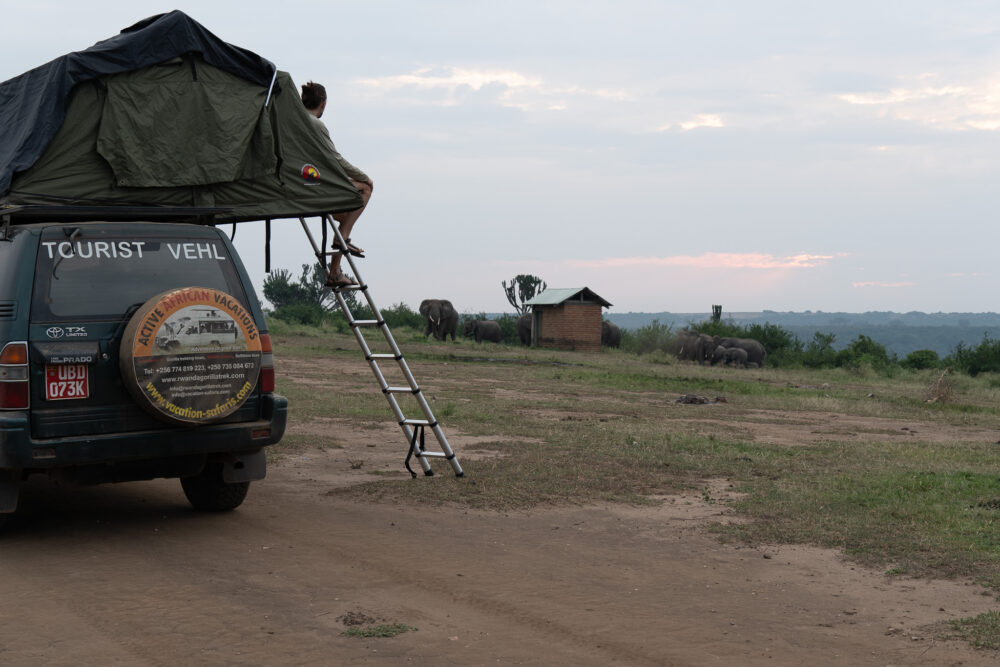
The most common places to camp are “campsites” and lodges. Many lodges and hotels have designated areas for people with tents and RTT (roof-top tents) to park. This way, rather than paying the $150 a night for a room, you can pay the standard Ugandan $10 per person fee to camp. We found that even the “public campsites” with rustic or no amenities charged this amount.
On IOverlander, you might find the occasional “wild camping” location. We did not use any, so I cannot confirm if you will be unbothered at them.
Invaluable Apps to Download for Your Uganda Road Trip
This isn’t a long list, but downloading these few apps will make life much easier in Uganda.
- Maps.Me. Excellent for self-driving within national parks. Cannot be trusted to take you the proper route between cities though.
- Google Maps. This is the most accurate online map of Uganda.
- IOverlander. This is where you’ll find every campsite in Uganda, the reviews are very helpful.
- MPESA is a local online money app. We successfully used only ATMs in Uganda and did not use MPESA as it was more of a hassle. I recommend just pulling out large amounts of cash in the cities of Kampala, Entebbe, Fort Portal, and Moroto, where ATMs are reliable.
- WhatsApp. If you’re an American and don’t yet have this app…get it. This is your gateway to communication in all foreign countries.
Internet: There are two different internet providers in Uganda. We used MTN and had a good connection throughout the country (for the most part).
Where to Rent Your 4×4 Vehicle
Road Trip Africa
We rented a 4×4 Landcruiser Double Cab from Road Trip Africa when we went to Tanzania following this trip. They also run rentals in Kenya, Uganda, Madagascar, and Rwanda. This is the premiere car rental company in East Africa. Not only are their vehicles in tip-top shape, but they have excellent customer service and, by far, the best kit available that comes with your rental.
While you do have to pay a premium for their services…there really is no comparison. If you have the cash to spend, this is the very best of the best in terms of car rentals in Uganda.
Active African Vacations
We rented a 4×4 Landcruiser Prado (automatic + petrol) from Active African Vacations. This was the perfect choice for us. It allowed for a 2-person rooftop tent, storage of our gear, and lots of extra room. We had no issues on any backroads, and the tires were in excellent condition. Additionally, it didn’t burn gas too quickly, as fuel is very expensive in East Africa.
There is also the reputable company Self Drive Uganda that you can check out.
Obviously, everyone has their preferences for vehicle style, but we do not recommend renting a Hilux because you won’t have a secure place to store your stuff inside the vehicle.
Billy was very responsive to our needs throughout the trip, willing to negotiate on price, and had a ton of mechanics throughout the country who never overcharged us.
Ugandan-Plated Vehicle: If you are planning on doing a full East African Road Trip like we did (read my blog post) and be sure to get a car with UGANDAN plates. In Tanzania, you’ll be charged extra in parks for Kenyan plates, and in Uganda, you’ll be charged a huge fee for ALL foreign plates. AKA Ugandan plates are the best option.
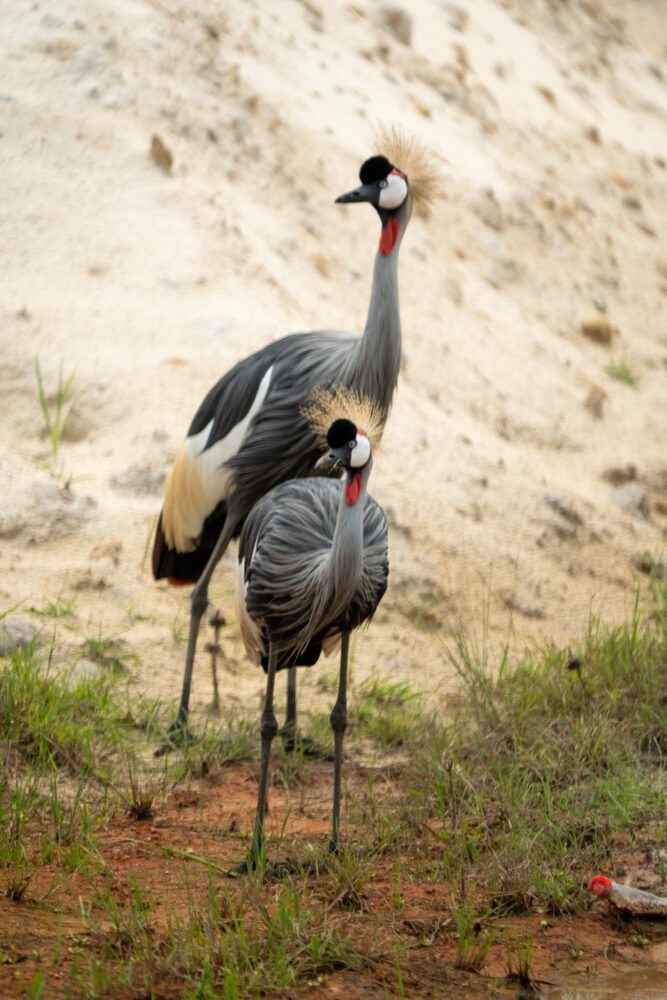
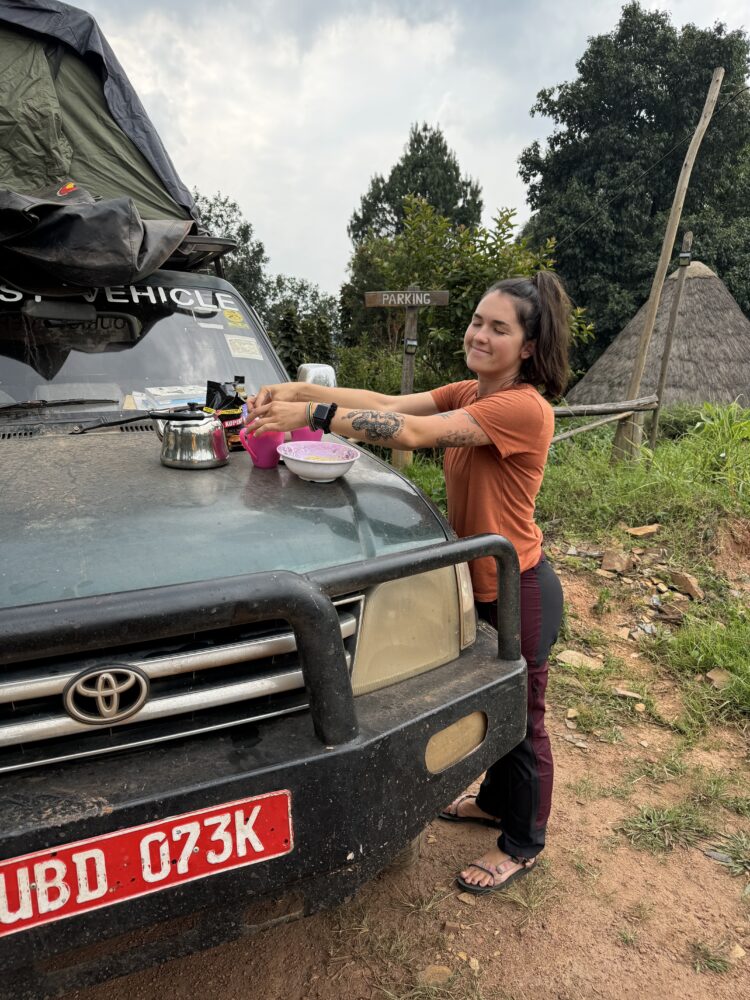
What’s Included with Your Rental Car
- Spare tire + car jack
- Cooking gas stove
- Cooking utensils (basics)
- Two sleeping bags + a rooftop tent
- Two camp chairs
- Network of reputable mechanics across the country
If you rent through Road Trip Africa you can also expect…
- A cooking table in addition to a small dining table.
- Bradt guidebook for driving in Uganda.
- Coffee Mugs.
- High-lift jack.
- Excellent Spare Tire.
- Easy-pack bedding, including a pillow.
- Easy-to-pack storage bin for all cooking gear.
What If I Get A Flat Tire?
WHEN you get a flat tire in Uganda, you can get the car serviced at a local Shell station. This is where they do the majority of tire repair and all oil changes you’ll need on the trip. It only costs around $2 for a tire repair and they will check the air pressure for free whenever you want.
Quick Tips for Safe Driving on Your Uganda road trip
Here are a few quick tips for safe driving in Uganda.
1. Never let your gas tank go below half.
Fuel is limited in many of the more remote regions. Be especially sure to fill up right before you enter the national parks.
2. Only use Total Energies or Shell gas stations.
Personally, I think you can use any large gas station, but technically, all the car rental companies would like you to use only these two because the quality of gas is standard, while in many locations, it can be watered down or compromised.
3. Never plan a drive day further than 300 KM.
Honestly, even that is pushing it depending on the region of Uganda. A Uganda road trip is not like driving in the United States, it’s going to be slow going most daysas roads are either dirt or pot-hole riddled.
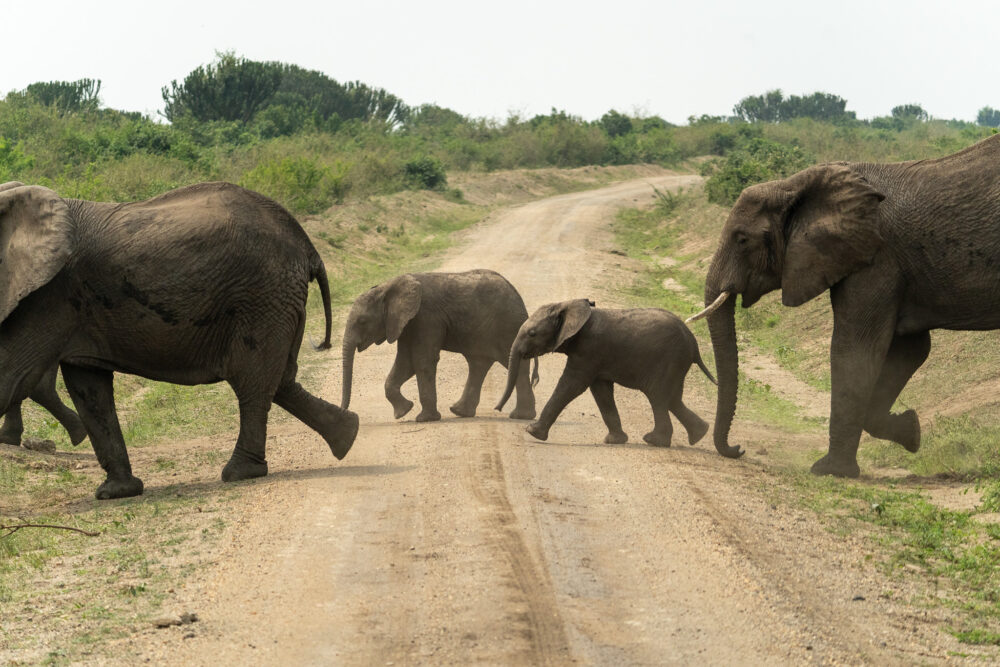
4. Google Maps + Maps.Me are mostly accurate.
We found it helpful to have a paper map at times. Those two apps can get you close to your destination in 99% of cases, but often, finding the campsite requires some asking around.
5. We also purchased a Garmin InReach.
We did not need it, but it’s a great backup plan for when we get ourselves into sticky situations. It would have come in handy when we road-tripped across Mongolia. But in Uganda, you rarely find yourself in an area without many people around who would be willing to help in an emergency.
6. Stock up on groceries in Kampala + Entebbe.
Elsewhere in the country, you’ll find that your options are severely limited. Even instant coffee and canned veggies can be hard to find once you leave the major cities. Your meals will get really monotonous.
7. 90% of the time, the roads in Uganda are good.
There were only a few touchy regions that required some 4×4 power and careful maneuvering: Kidepo Valley and Bwindi National Park.
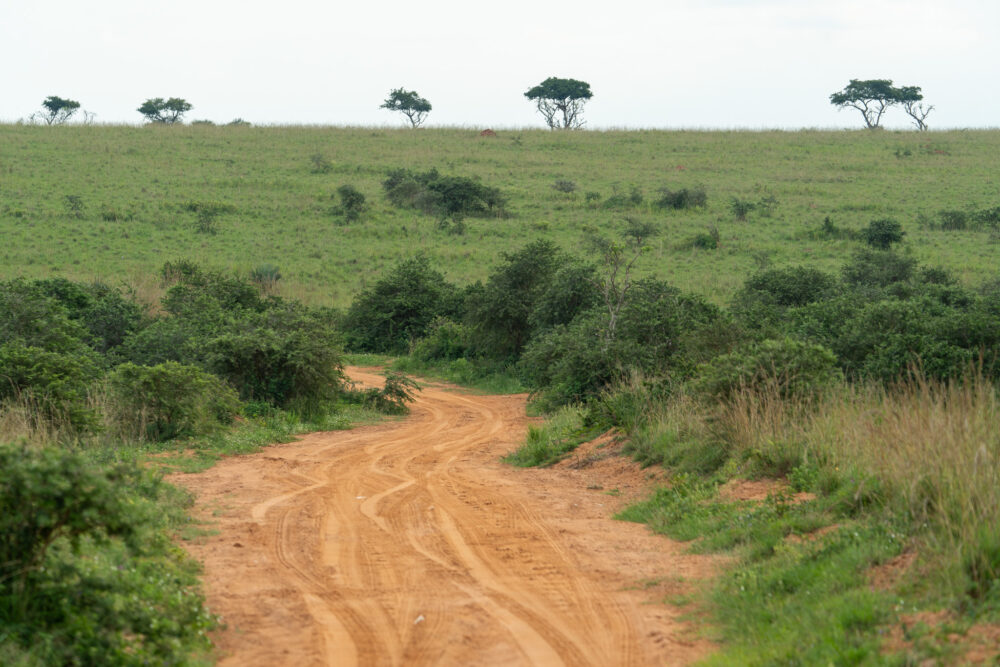
8. Don’t dress in short skirts, dresses, or shorts.
Uganda’s leader is very conservative, and technically, this kind of dress is forbidden in the country. Tank tops are fine, and you’ll find that most Ugandans don’t dress nearly as conservatively as other nations.
Scams to Watch Out for When Driving in Uganda
And what do you have for me? This is a commonly asked question when you reach a police checkpoint in Uganda. While we didn’t experience too much bribery in the country, you might encounter it. Be sure you have your license and paperwork handy, don’t speed, and you shouldn’t have to pay any fines. We found this to be much more of a problem in Kenya.
Mechanics and tire repairs are the most common scams you’ll encounter. This is why I recommend renting with Active African Vacations. They will give you the best mechanics in each town who will charge you the local price. We went to one on our own just to check, and they tried to charge us $25 for a $2 repair.
In more touristed areas, you might also encounter kids throwing things at your car or running over to ask for money or snacks. Just slowly keep driving, and they will move on to the next one.
What Should I Bring to Give to Kids? Should I Give to Them at All?
Never give kids money. If you give children money when they ask, they will go back to the road every day instead of going to school. A local told me this. Instead, give biscuits, soccer balls, coloring books, drinks, or any assortment of small toys or snacks.
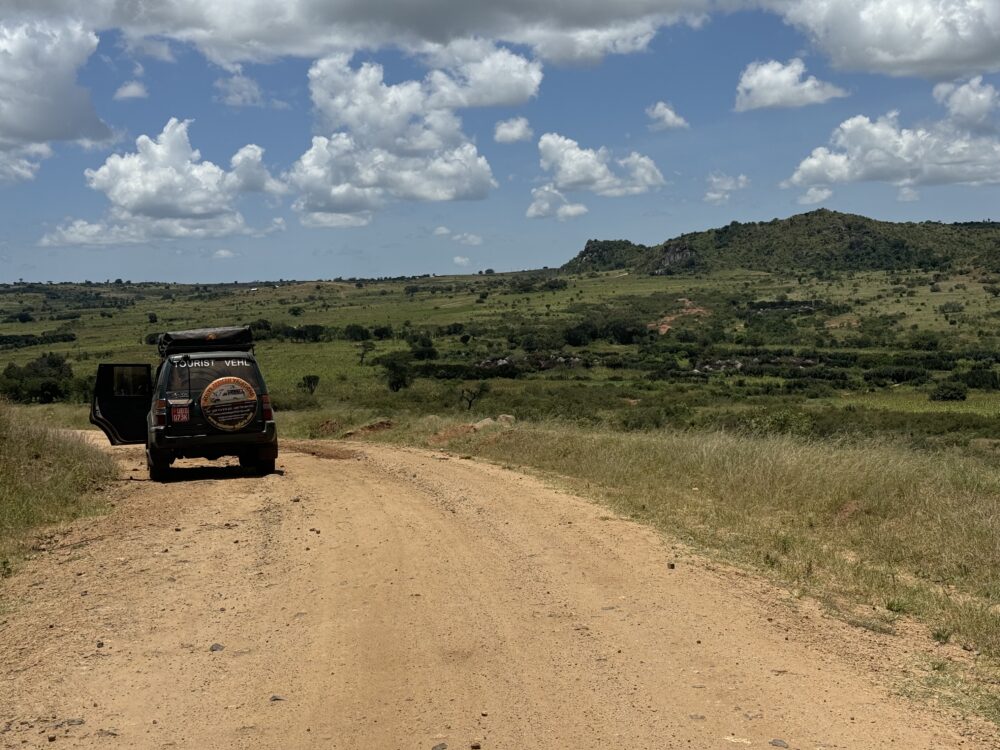
If I could do it again, I would bring more—even clothes if I had them. This way, when children ask you for something, you have something to give. Unfortunately, it will all be gone too soon. There are so many children in the country in need, and as one person, you can only do so much. But I feel as though you will want to contribute a little something every now and then on your travels.
Busting Some Safety Myths
Coming to Uganda, I’ll admit it: we were a little nervous about safety and theft.
This is because of the stories you sometimes hear about this region of the world. After spending over a month in Uganda and three months in East Africa, I can say…we experienced no theft and no “almost theft” in the country. I never felt unsafe, and the people were nothing but kind and helpful.
Don’t be nervous.
As for the “Level 4 Do Not Travel” advisories to specific regions of Uganda (Inshasha + Queen Elizabeth National Park areas), we experienced no issues while traveling in the area and felt no different than other parts of the country. This is our personal experience, and you must choose for yourself.
The LGBTQIA+ Issue: Uganda is a dictatorship with a very conservative leader, apparently easily influenced by uber-conservative missionaries from the West. This means LGBT+ is punishable by death in Uganda. If I were a traveler with a same-sex partner, I would probably not travel to Uganda. Even TEACHING about LGBT+ in Uganda can get you a 20+ year prison sentence.
Our Favorite Campsites For Your Uganda Road Trip!!
- Nile River Camp (Jinja)
- Nkima Forest Camp/Lodge (Mabamba)
- Pangolin Rescue Center (Buhoma)
- Mweya Campsite (Inside Queen Elizabeth NP)
- Nagusokopire Campsite (Inside Kidepo Valley NP)
- Moses Campsite Sipi Falls (Sipi Falls)
I’ll include all the campsites we stayed at on our Uganda road trip in this guide but these 6 were our FAVORITES and you should plan to visit as many as you can.
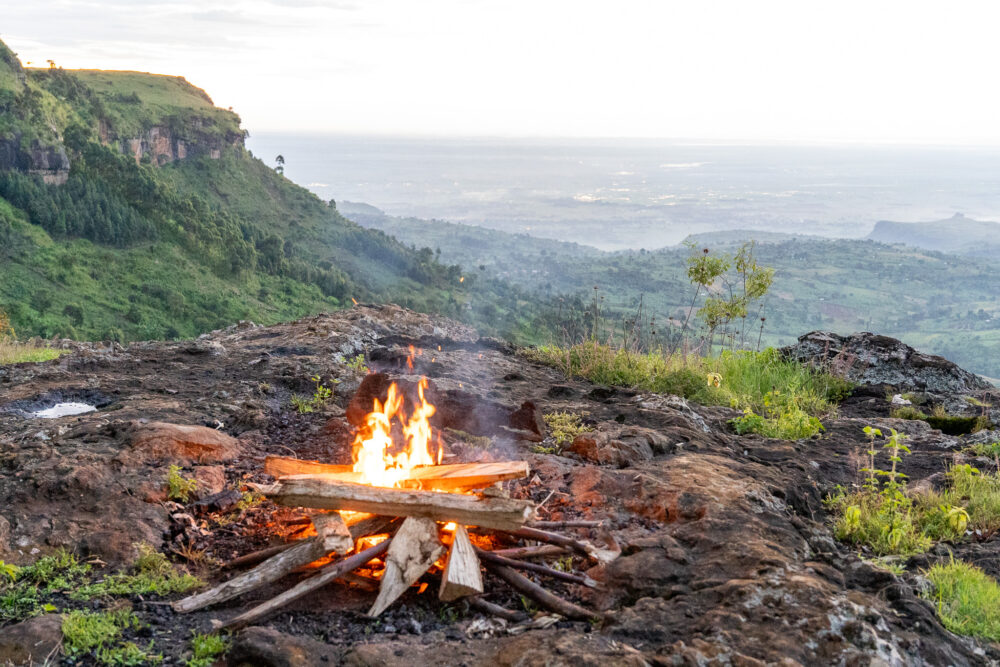
Our 22-day Uganda Self-Drive Itinerary
Obviously, this is the condensed version. This is the quickest way to see all the sights in Uganda. If you love a place or need a break, then it’s easy to extend. But as you’ll be paying per day for the car, I’ve left out any rest breaks and just given you the SPEEDY version. To make it any shorter, you’ll have to cut out regions of the country or skip certain national parks.
Note: Your Gorilla Permits will be the most time-sensitive activity in Uganda. If you plan on trekking to see them, that is. Read my guide here to decide. But as you’ll have to pick a specific date and gate of entry, this will dictate your travel direction.
Day One: Arrive in Entebbe
Considering arrivals at this airport are usually in the afternoon, this day barely counts. Get settled into a backpacker hostel and stick around the peninsular region of Entebbe. Kampala is my least favorite part of Uganda, and I would avoid it if I were you.
Where to Stay: ViaVia Entebbe
They also allow camping if you have already picked up your vehicle.
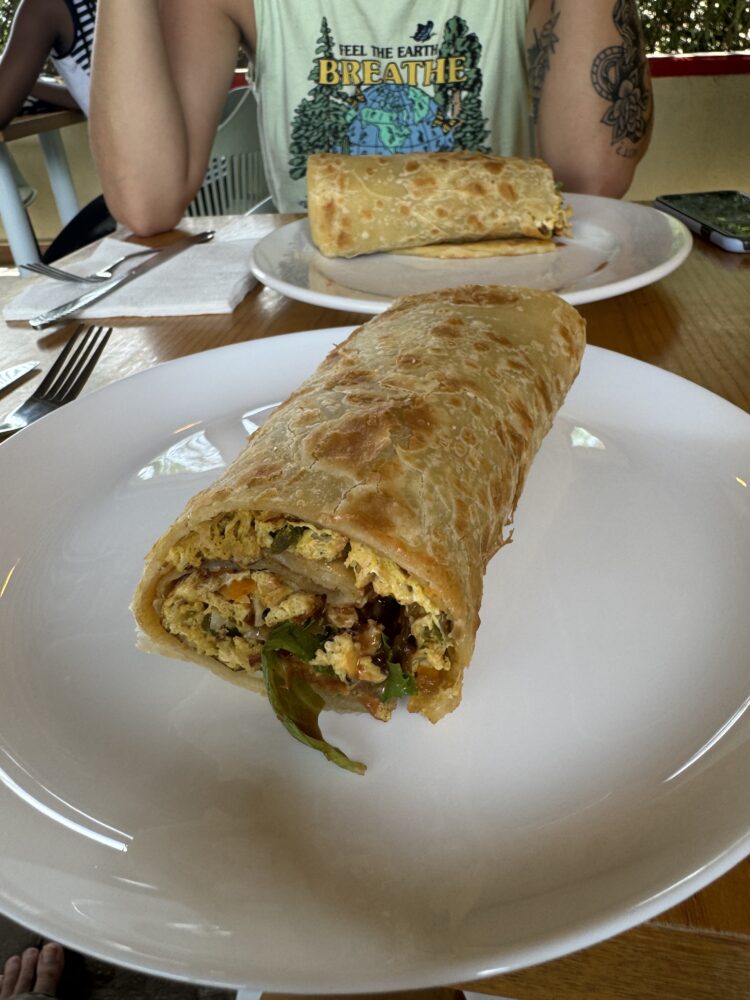
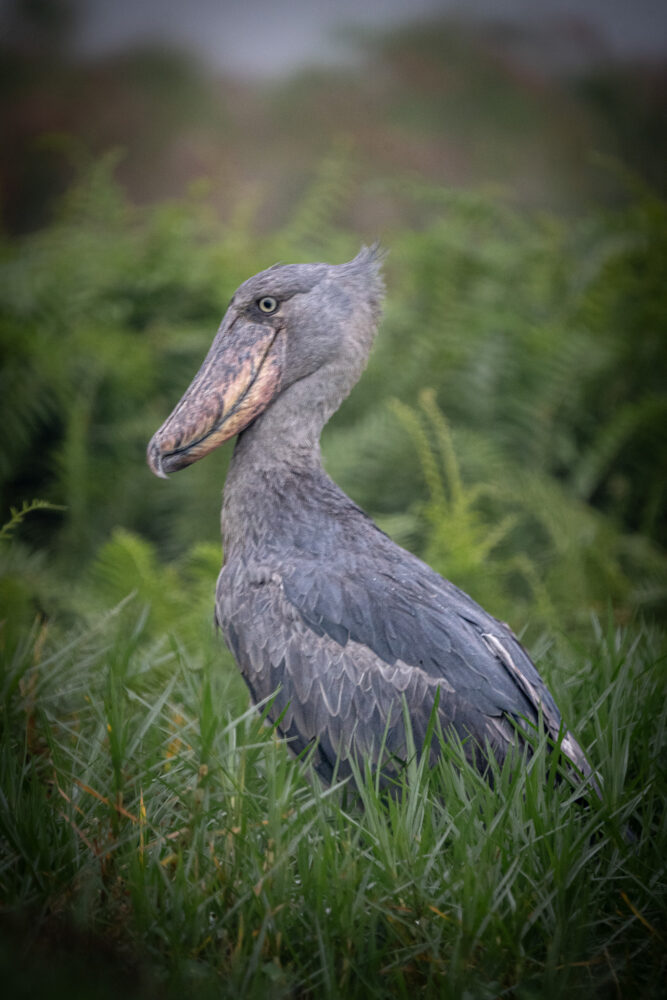
Day Two: Entebbe to Mabamba Swamp
- 20-ish KM + 1-2 hours drive, depending on the ferry.
Today is the day to pick up the car! While you might think you should be ambitious and pick it up early to get rolling, take your time. Pole Pole, as the locals say. You’ll need several hours to gather all the supplies, groceries, and gear anyway, so you might as well take the day to get used to the car in the city and prepare for an afternoon departure.
Supplies to be sure you have before you leave Entebbe:
- Cash for the trip.
- A huge amount of groceries.
- At least 25 liters of water per person, unless you want to search for water constantly. The more the better.
- We got a pillow and a few blankets to make sleeping more comfortable.
- Also any supplemental cooking items you might need (we got a new knife for better cutting)
To reach Mabamba, you should take the local ferry from Entebbe. This is FREE. But you have to queue up, and it takes some time, so go earlier than 4 PM to ensure you’ll make the final ferry of the evening. It doesn’t operate after dark. The ride takes only 15 minutes or so and has a pretty view of the lake.
Where to Stay: Nkima Forest Lodge (0.08999, 32.35575)
They offer a $20 per person 3-course menu that doesn’t include so much local food, but it is delicious, and we decided to share one meal and treat ourselves. You can also get REAL coffee here in the morning. The campsite itself is simple but as it’s near a swamp be prepared to protect against mosquitos.
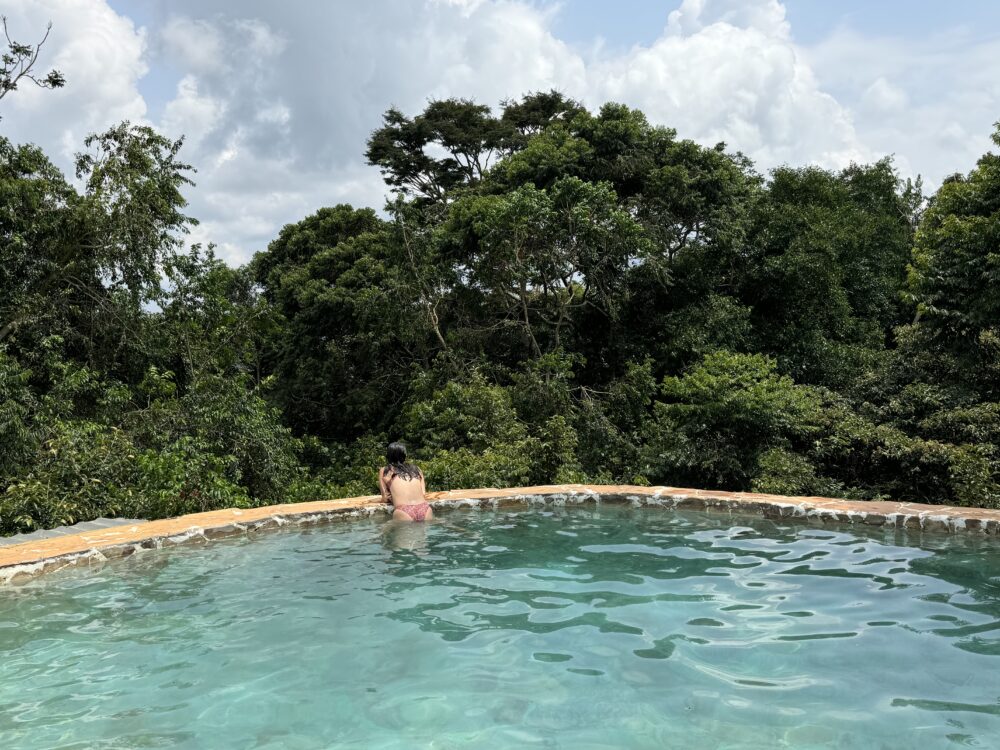
Day Three: Mabamba Swamp to Lake Mburo National Park
- 215 KM + 5 hours drive
- Activity: Mabamba Swamp Boat Tour in Search of the Elusive Shoebill Stork
Wake up early (like before 7 AM) to head to Mabamba Swamp and barter with the boat operators on a tour. We got them down to around $22 per person. Steep, but way less than the $60 per person advertised by lodges and in town. The tour takes around 2 hours, and you’ll see many birds.
Then, I recommend spending the morning enjoying the incredible facilities of Nkima Forest Lodge, including the beautiful pool. These are all free with your campsite.
Once it reaches midday, you can hit the road and head to Lake Mburo National Park. The roads are very good, and it should take around the Google estimate to reach there.
Where to Stay: Leopard Rest Camp (-0.53131, 31.01110)
This is a super popular camp, so it would be good to call ahead. Maybe the only camp in all of East Africa I recommend this for. Here, you’ll find lots of facilities to cook easily and have a rare opportunity to meet fellow travelers.
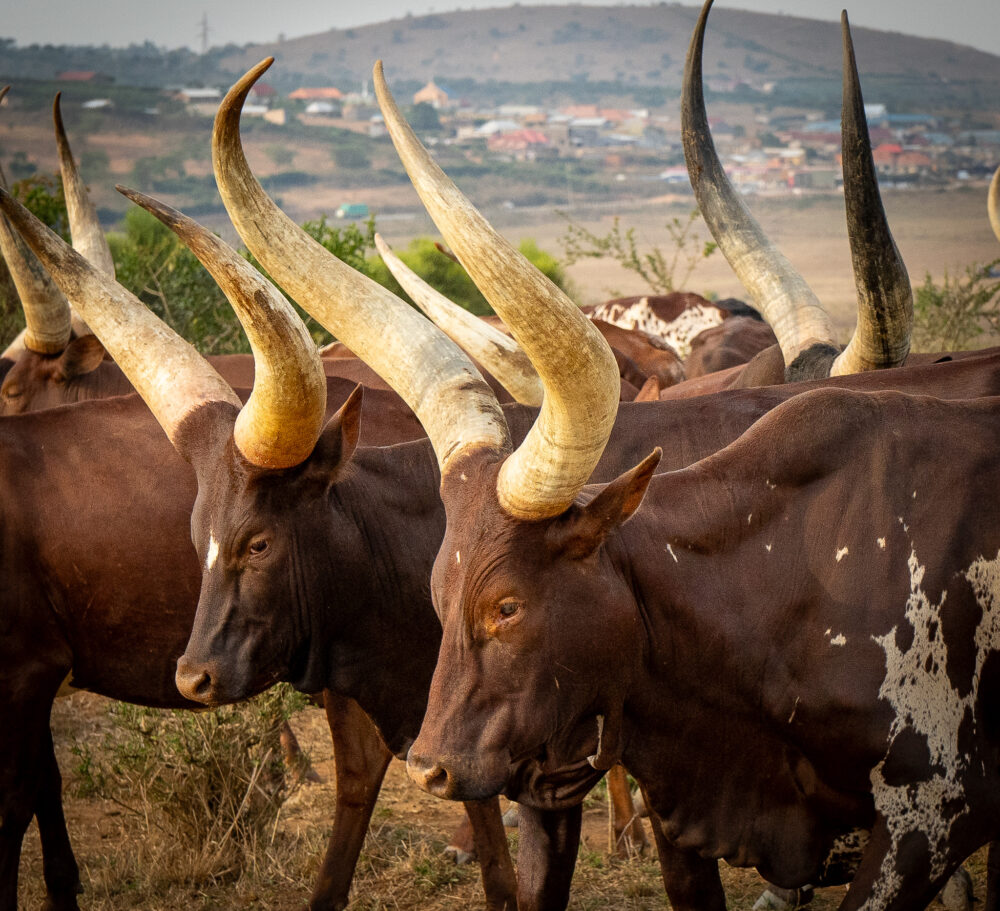
We did not go into Lake Mburo National Park. Read my blog post on choosing the best national parks in Uganda for your wildlife desires to decide which is best for you.
Day Four: Lake Mburo to Lake Bunyuoni or Lake Mutanda
- 240 KM + about 5-6 hours
This is a choose-your-own-adventure stopover. We chose Lake Bunyuoni and, unfortunately, camped in the wrong spot. It ended up being loud and very near the town center.
Mutanda Campsite: Mutanda Eco-Community Center (-1.25652, 29.68214)
Be prepared for some rough road, but I hear the views are worth it.
OR
Lake Bunyuoni Good Campsite: Amasiko Homestay + Campsite (-1.22799, 29.86790)
We didn’t make it here because we could not find the road. Maps.me, and Google failed us. To reach this campsite, you should actually drive past Lake Bunyonyi to the very tip (near Kyamps Petrol Station) and then take the dirt road from there.
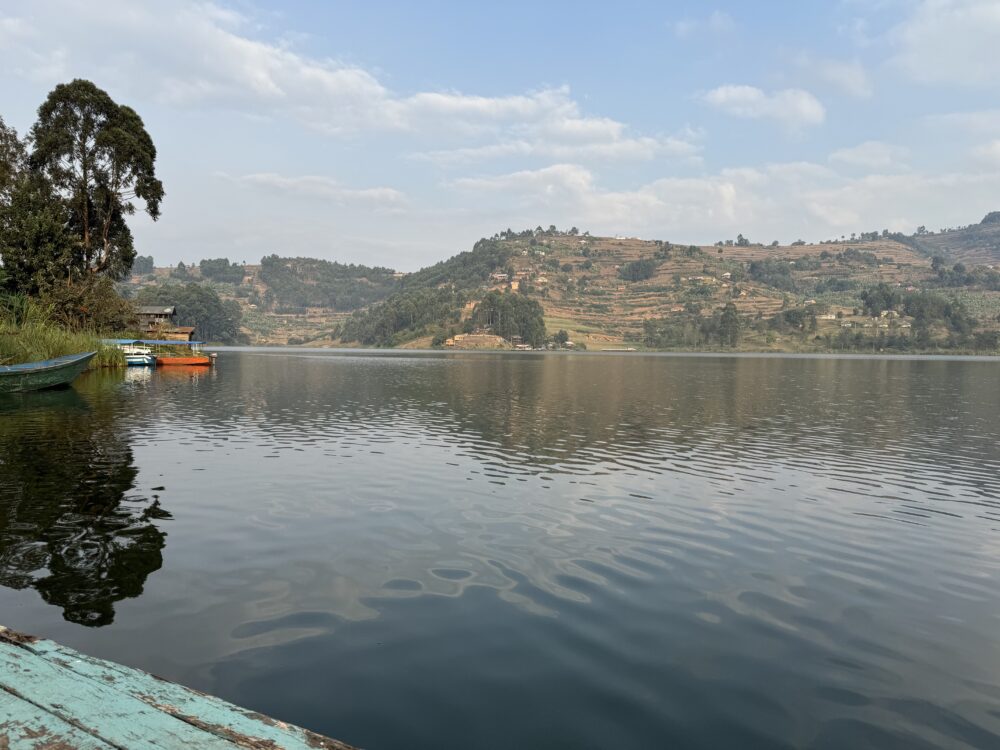
Rwanda Add-On: If you plan to add Rwanda to your road trip and then come back to Uganda, THIS is where you should deviate and head to the border via Kisoro to Rwanda. We made the mistake of doing the Gorilla in Bwindi first, and this caused A LOT of backtracking. Learn from my mistakes. If you plan to cross borders with your rental car, you must tell the office in advance. They will need to prepare several documents for the vehicle; otherwise, it will not be allowed to leave the home country.
Day Five: Lake Bunyuoni/Mutanda to Bwindi National Park (Gate of Your Choice)
- 100 KM + 4 hours drive
Read my complete guide to Gorilla Trekking to choose the best gate for you.
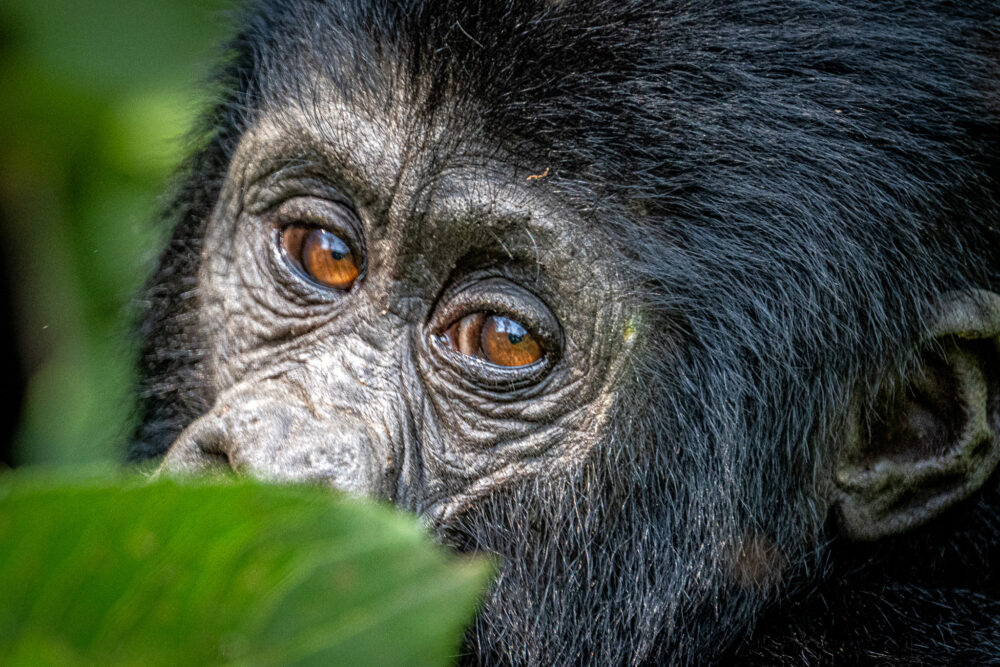
Today, we leave the pavement behind. The main road through Bwindi National Park is dirt and can get rough after rain. You’ll need to use Maps.Me for navigation most often, and the only campsites are near to the trekking “gates” themselves.
We chose Ruhija Gate and were very happy with our decision.
Fuel Warning: BEFORE you enter the forest, be sure to gas up in Kabale. This is the last gas station until you reach the Inshasha area.
Where to Stay: Agandi Eco Lodge (-1.03504, 29.77563)
The “campsite” is just a parking lot, but the lodge lets you use their hot showers, and the food is quite good.
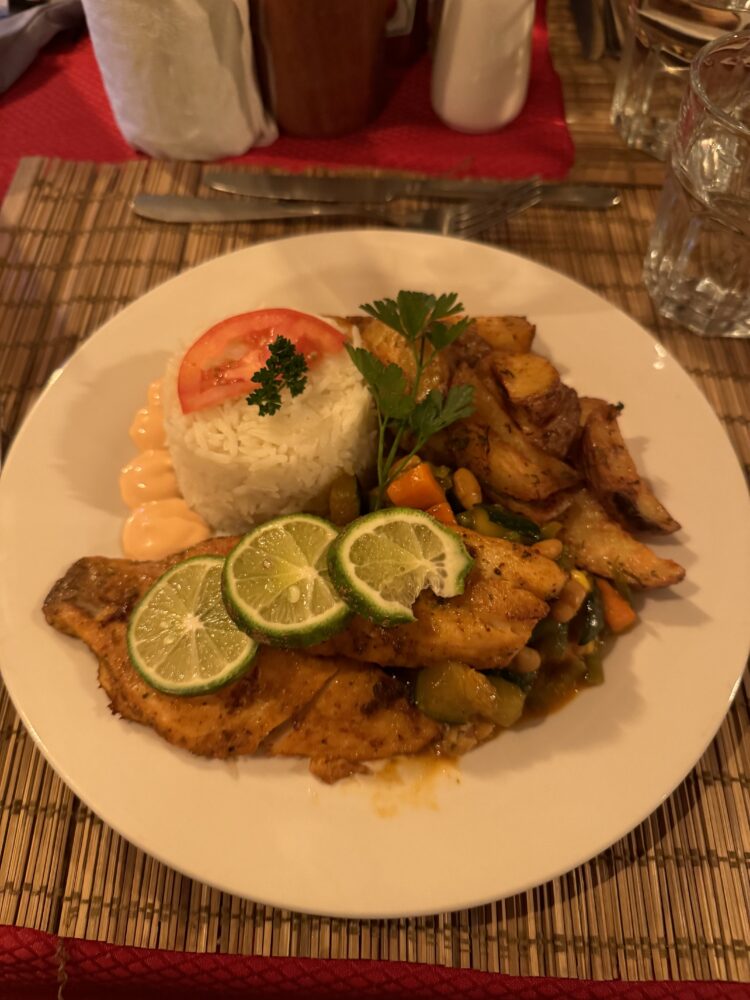
Day Six: Bwindi National Park Gorilla Trek
- Activity: Go Gorilla trekking!
Gorilla Trekking starts early. You must be at the meeting point with tickets and documents in hand around 7:30 AM. DO NOT GO TO THE WRONG GATE. Really. There’s no money back for you.
If you’re young, you’ll be grouped with other under-50-year-olds and sent to trek to the Gorilla group furthest from the center. This usually means 3-4 hours of trekking, so come prepared.
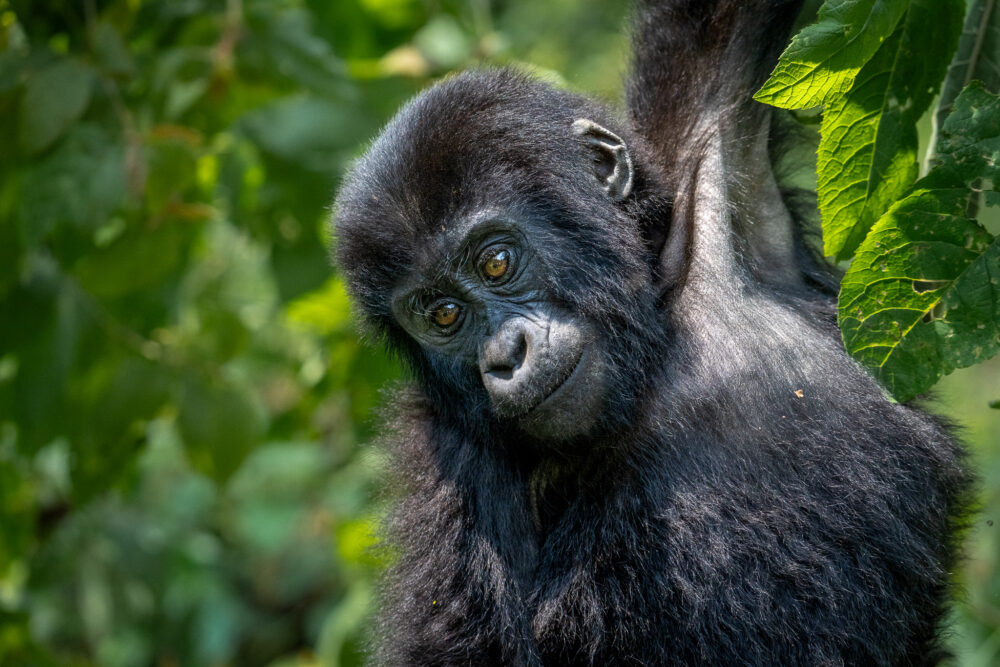
It is appropriate to tip not only your guide but also the rangers who sit out there all day with the gorillas tracking their movements, so bring extra cash.
Getting Your Permit: Gorilla permits for the peak seasons are booked out very far in advance. I recommend booking this very first if there is a certain park or gate you prefer. For the cheapest way to book- read my blog post.
Where to Stay: Agandi Eco Lodge (-1.03504, 29.77563)
Rest up and stay back in the same place.
Day Seven: Bwindi National Park to Buhoma
- 40 KM + 2 hours drive
- Activity: Walk with rescued pangolins in the jungle.
Welcome to some rougher roads, especially if you’ve been blessed with some rain in recent days. Fortunately, the views around you are stunningly beautiful, and you’ve got all day to cover no more than 50-100 km, depending on the gate you trekked from the day before.
The Pangolin Rescue Center is one of my favorite wildlife projects in East Africa.
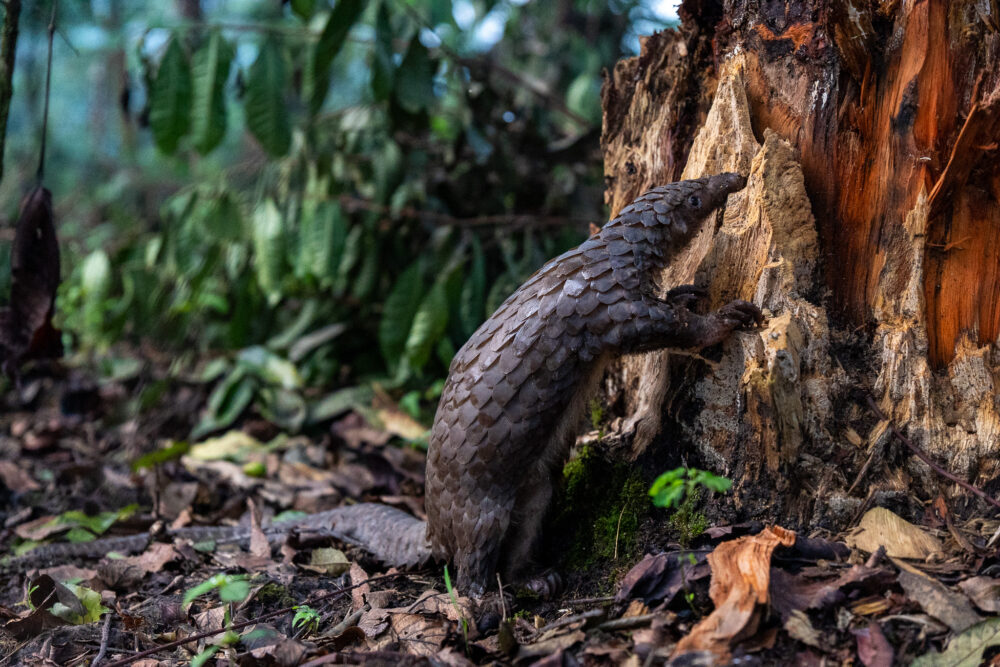
Here, you can see the critically endangered pangolin and help in its conservation. To reach the camp, take the main road through the park all the way to Buhoma, and then be sure to deviate so you take the dirt road past “The Crested Crane Bwindi” on Google Maps to the town of Rugando. You can reach this camp by other routes (like the one that Maps.me recommends), but it’s much rougher, and why not make it a little easier on yourself?
Where to Stay: Pangolin Rescue Center (-0.92451, 29.61269)
Contact Moses before your visit to see if there are any pangolins on the premises.
WhatApp Number: +256 782 386972
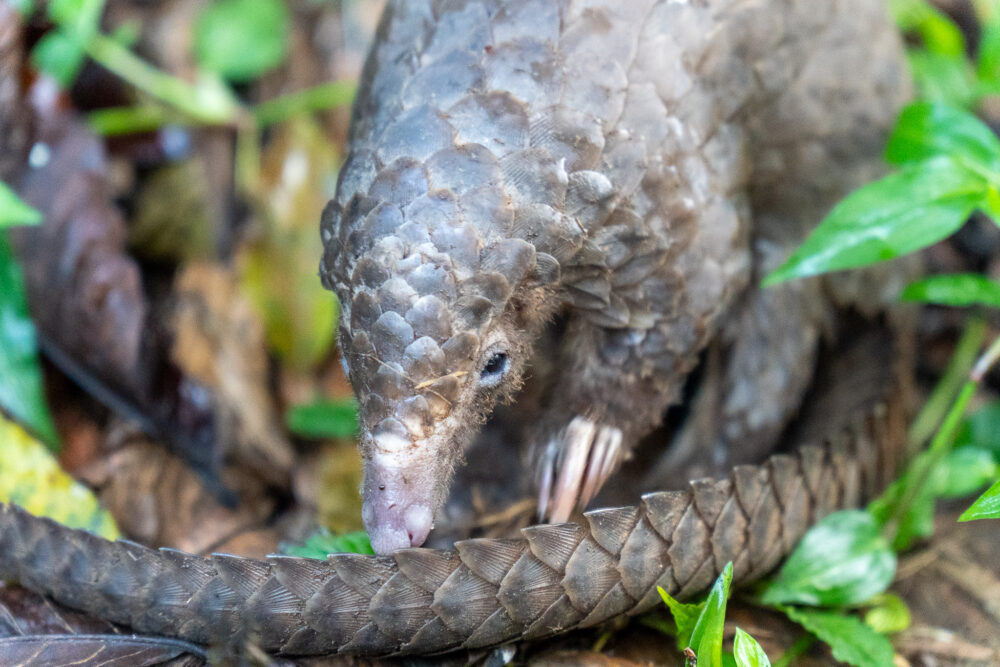
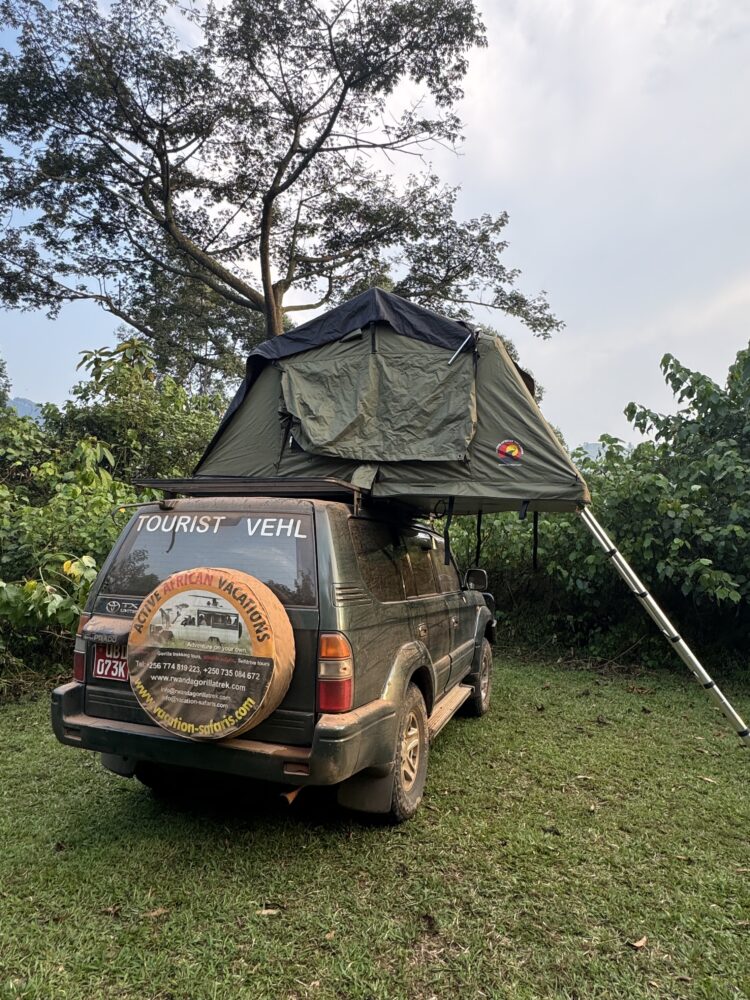
Day Eight: Buhoma to Ishasha Sector of Queen Elizabeth National Park
- 50 KM and 2 hours drive
- Activity: Queen Elizabeth National Park game drives
From Buhoma, there is no need to drive back the way you came out of Bwindi National Park. Instead, you’ll continue into Queen Elizabeth National Park via the Inshasha Gate. The roads here will also be dirt, but you should make it quite easy as this is a very popular route. Rough road is all part of the adventure.
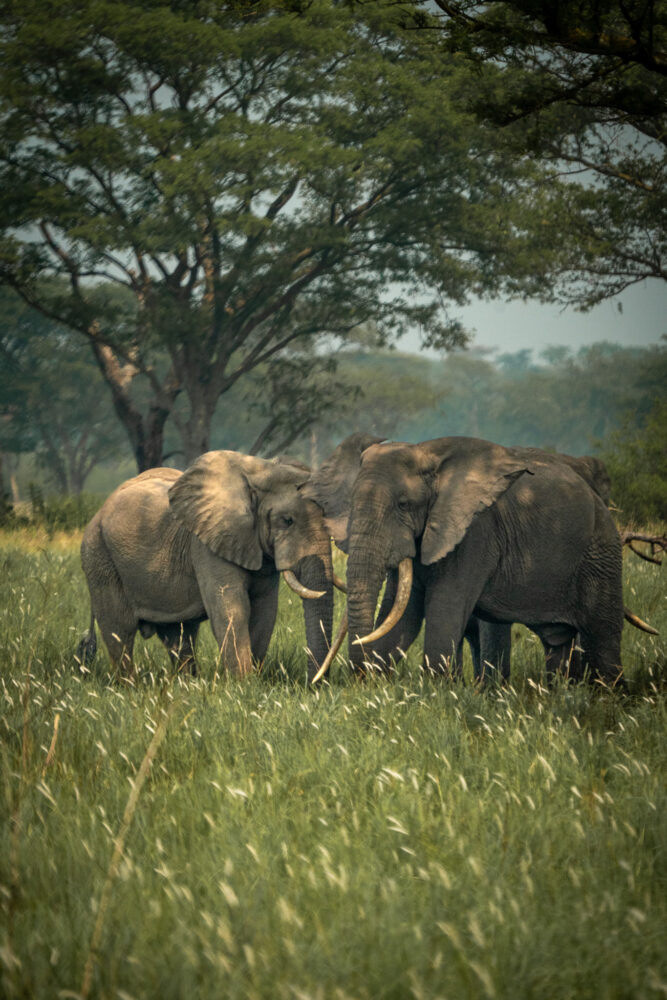
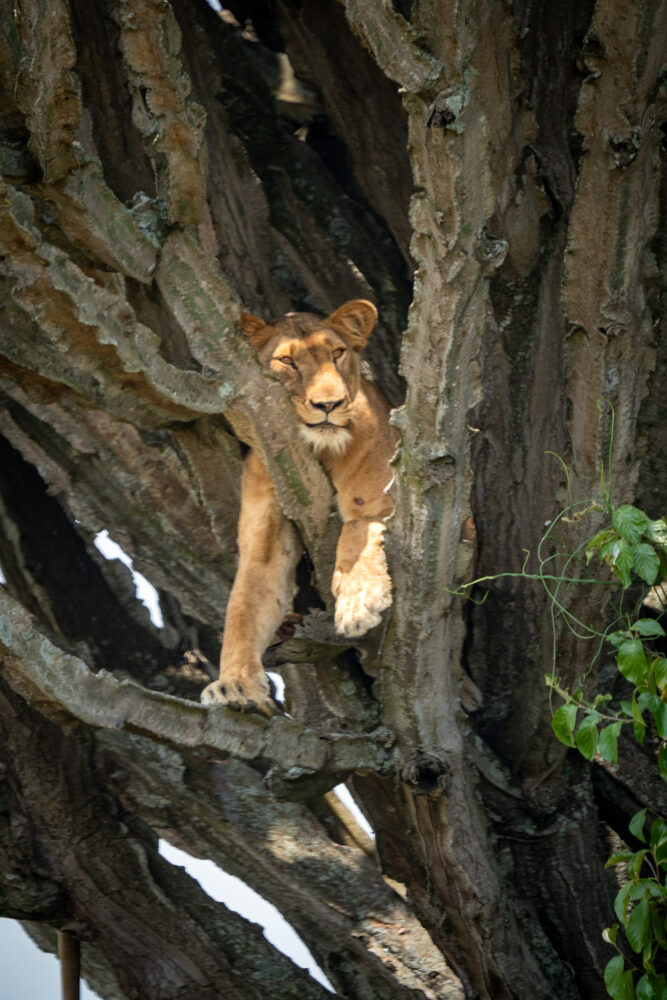
I know that on Google, these roads barely show up…but this is the main route to connect these two parks, and it will save you heaps on gas money.
I recommend entering the park around midday or midafternoon to take an afternoon game drive in this sector. This park is so large that it’s essentially split into three sectors: Inshasha, Mweya, and Kisenyi.
IMPORTANT! This itinerary allows for two days in Queen Elizabeth National Park. This is our favorite national park in Uganda for Wildlife. I highly recommend two days (or three), but if you must condense, then skip Ishasha, NOT Kisenyi. Due to nearby conflict by the border and poaching, most of the lions have moved out of Ishasha into the Kisenyi area.
Read my full blog post to learn more about Queen Elizabeth National Park and how to plan the perfect visit.
Where to Stay: Ishasha Campsite #1 (-0.61559, 29.65786)
Day Nine: Ishasha to Mweya Sector of Queen Elizabeth National Park
- 110 KM and 3 hours
- Activity: QENP Game Drives
Pop up early for a leisurely game drive through the park to the Kisenyi and Mweya sectors. The drive through the park is long, but it offers lots of opportunities to see wildlife. Once you reach the other sectors, you could take a mid-afternoon boat ride through the Kazinga Channel to see a ton of Elephants and hippos close up and then take an evening game drive in the Kisenyi sector.

If you’re interested in a night safari here, you can also opt to do one of those.
Where to Stay: Mweya Campsite (-0.19669, 29.90138)
This is one of my favorite public campsites within national parks. It was nice and quiet for us, other than hippos tramping into the area in the middle of the night.
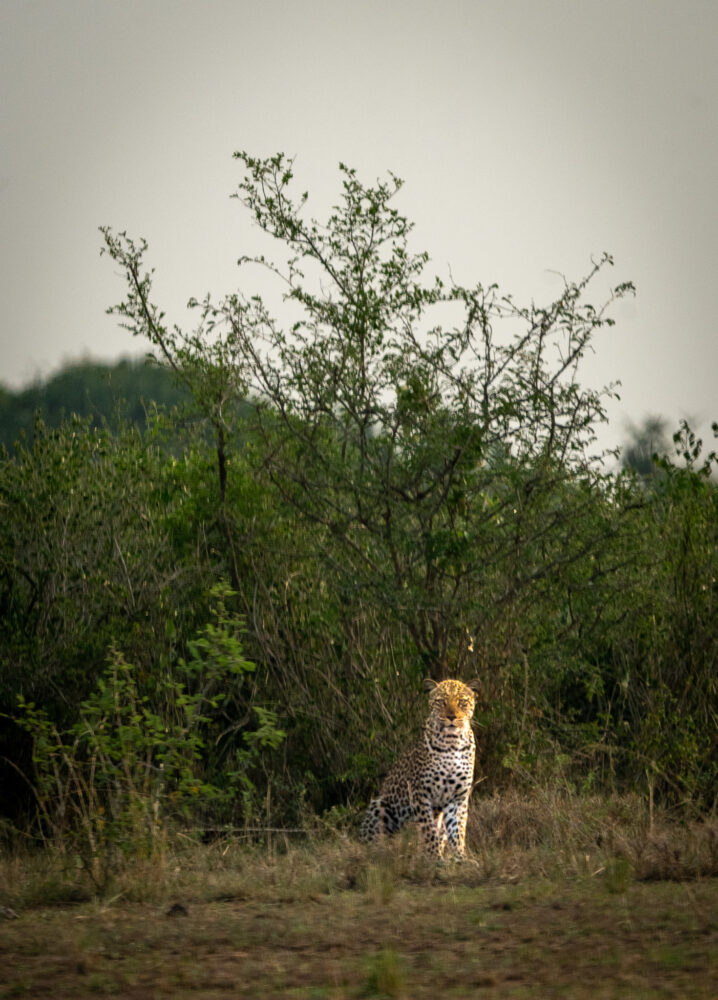
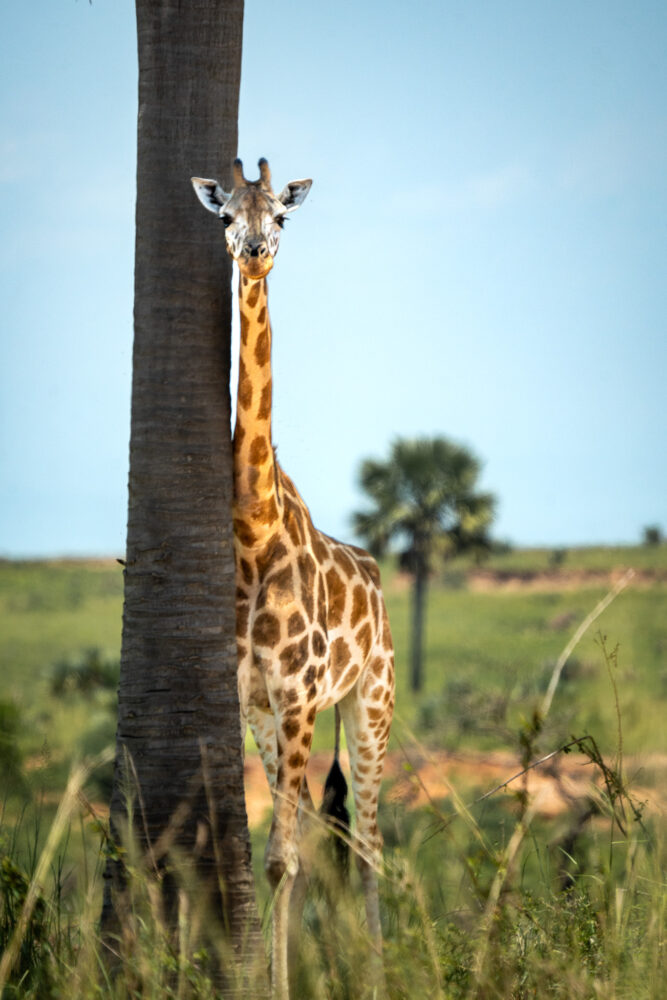
Detour: If you plan to visit the Rwenzori Mountains for hiking…this is where you will add it into your itinerary.
Day Ten: Queen Elizabeth National Park to Fort Portal
- 130 KM + 3.5 hours drive
Before leaving the park, use up your 24-hour entrance ticket and take a morning drive through Kisenyi via the Channel Drive in Mweya. This is probably the most popular time to see lions and large wildlife in the park. However, we had good luck at pretty much all times of day.
The drive to Fort Portal is all pavement, which will come as a relief after a week of driving on rough roads. Fort Portal is a major city and offers one of your only opportunities to hit some real grocery stores and ATMs and grab a coffee at Garden’s Restaurant if you’re craving one.
Where to Stay: Aramaga Rift Valley Lodge
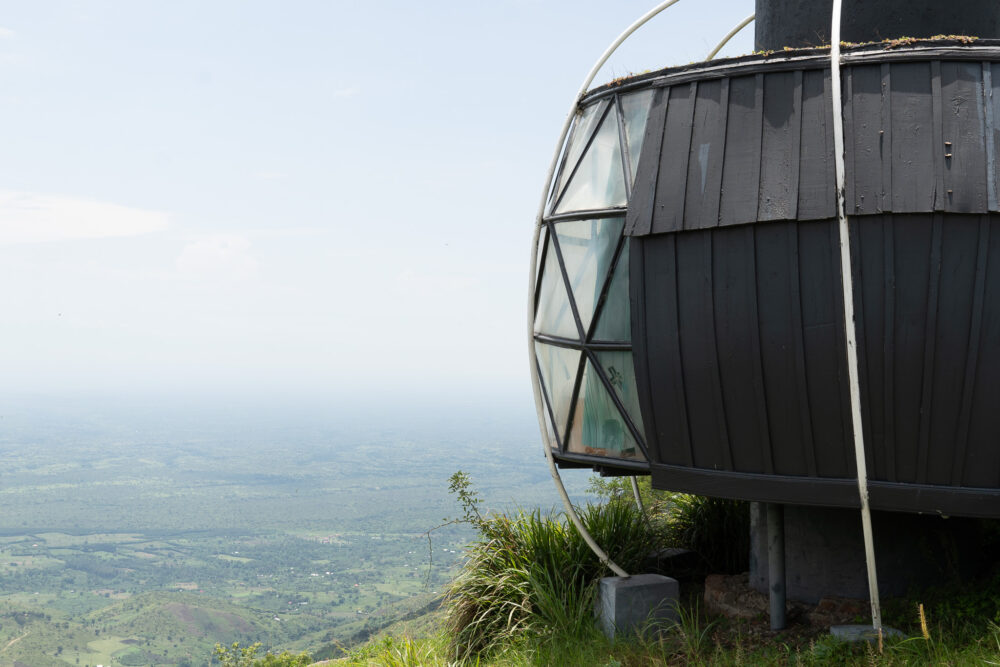
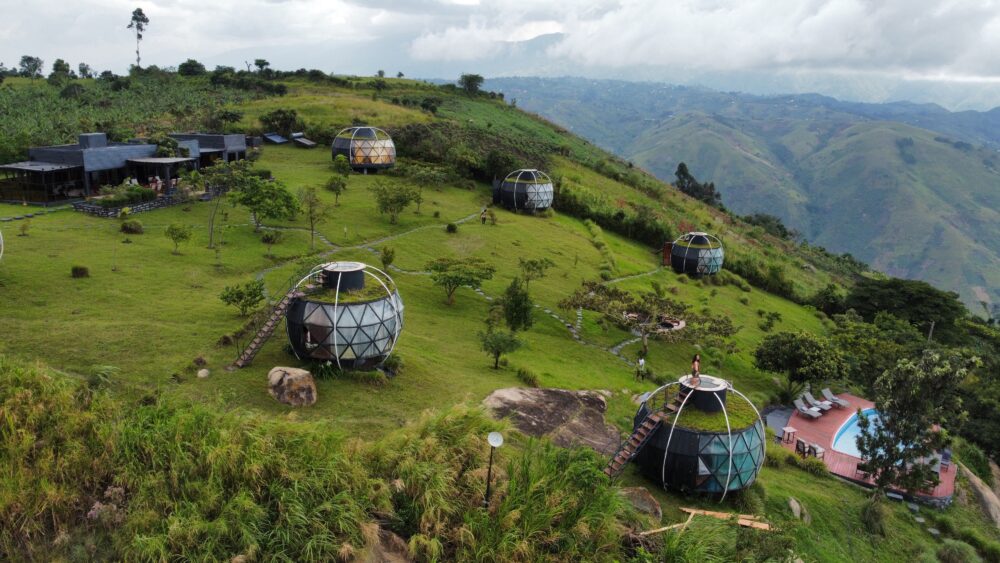
This is not a campsite. This is a stunning bubble hotel on the edge of the world where you can indulge in a little bit of luxury and a unique stay. Each transparent bubble room has a rooftop bathtub and incredible views of the valley below.
Day Eleven: Fort Portal to Budongo Eco Lodge
- 280 KM + 6 hours drive
- Activity: Chimpanzee Trekking
This is an optional stop for Chimpanzee Lovers. There are many places in Uganda where you can trek to see habituated Chimpanzees, but according to my research, this is the best one for travelers on a budget. While the cost of trekking permits is universal in Uganda (and only going to go up from here), the lodge here allows camping, and if you pay for the trek, you DO NOT have to pay for an additional park entrance fee.
If you’re looking for a more luxurious option, then read my blog post on Kyambura Gorge Lodge.
If you’re not planning on chimpanzee trekking, then I recommend you enter Murchison Falls through the Bugana Gate. This area has less construction and better scenery. You’re more likely to see some animals here.
Day Twelve: Budongo Eco Lodge to Red Chili Rest Camp (Murchison Falls National Park)
- 60 KM + 1-2 hours
- Activity: Murchison Falls National Park game drives.
Welcome to your next national park.
I also have a full guide to visiting Murchison Falls National Park. FYI, Murchison Falls appears to run a little looser than Queen Elizabeth.
Here you can choose to do:
- Night safari to see lions, hyenas, and leopards.
- Boat tour to Murchison Falls.
- Hiking to Murchison Falls top from the parking lot (located about an hour from this region of the park).
I recommend officially entering the park for an evening game drive (around 4 PM). Read the full park guide for exact information.
Where to Stay: Red Chili Rest Camp
The campsites within Murchison Falls were not super impressive. Red Chili, at least, has amenities and views so that you can camp comfortably within the national park. This site is technically within the national park boundaries, so you have to have a park ticket to stay.
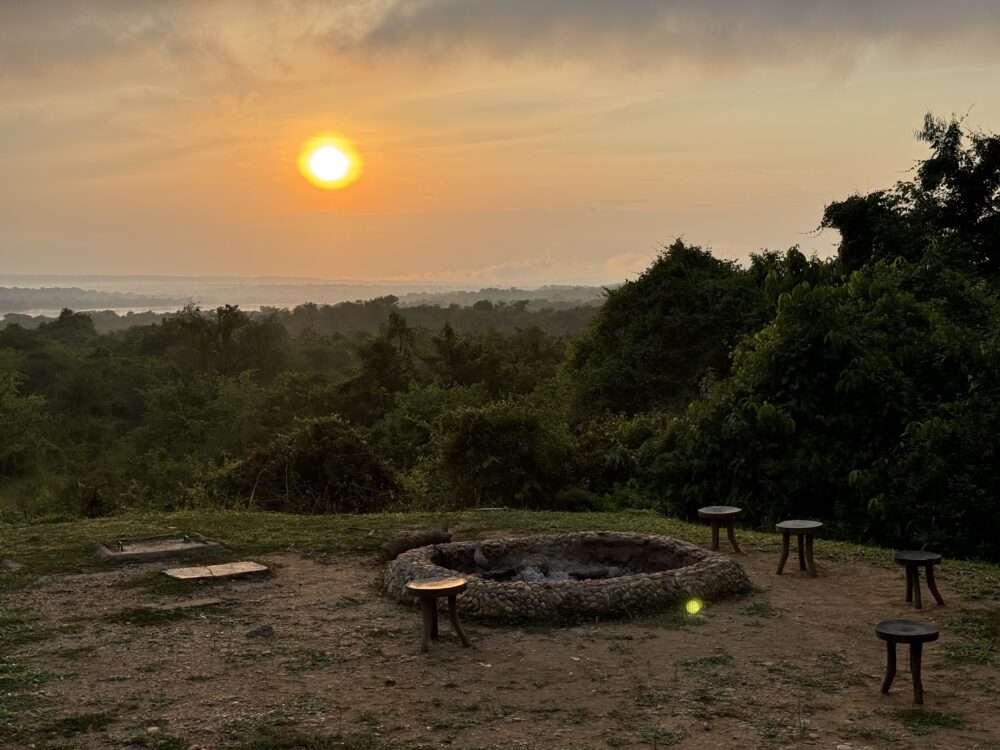
Day Thirteen: Murchison Falls National Park
- Exiting the park to Pakwach is about 40 KM and 1 hour.
- Activity: Murchison Falls Game drives.
Start your day early with a morning safari, take a boat ride during the mid-day hours, and then exit the park through the Pakwach north gate. This allows you to take full advantage of your 24-hour ticket.
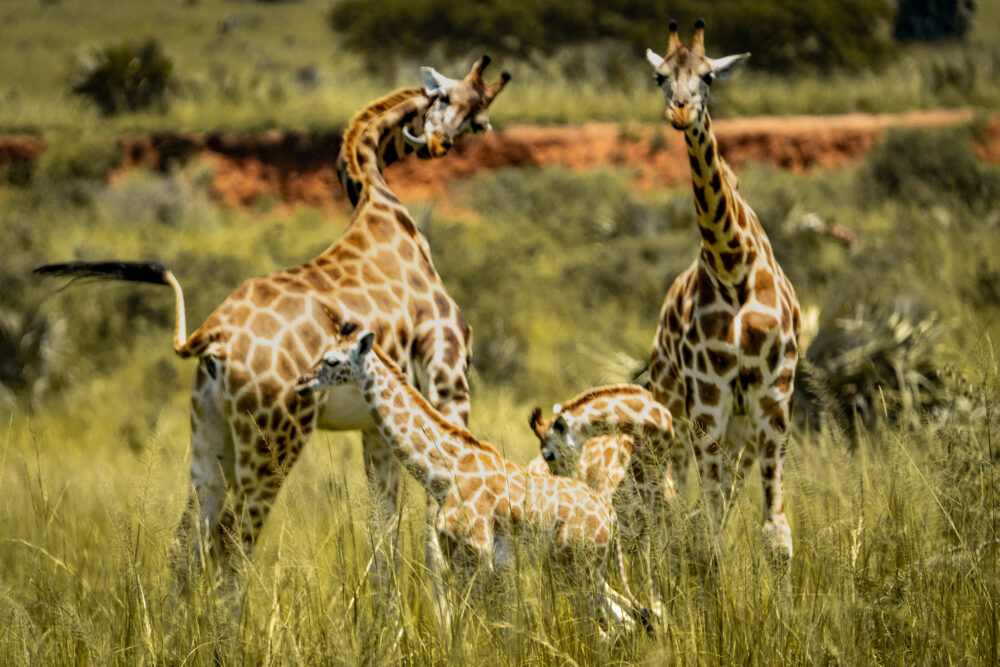
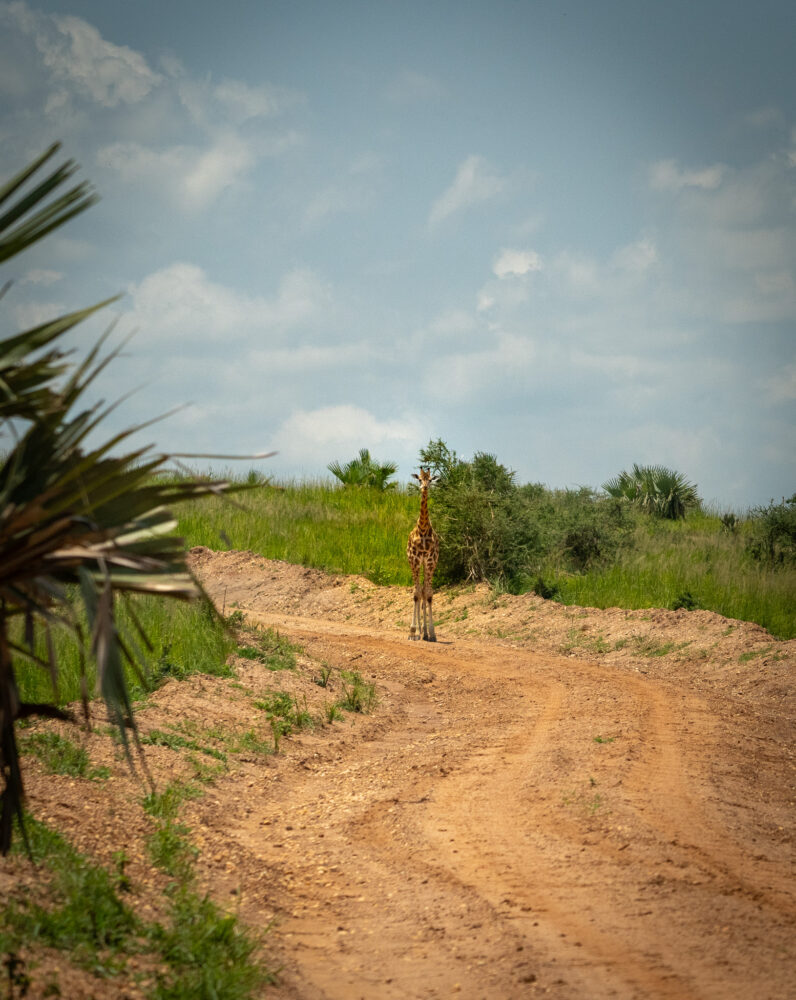
This is a great place to extend for one more day if you love the park.
Where to Stay: Heritage Campsite (2.47992, 31.53706)
Read More: Best National Parks in East Africa for Wildlife
Day Fourteen: Murchison Falls to Acaki Lodge
- 220 KM + 4 hours
It’s time to head toward Kidepo National Park. It typically takes about two days to reach the park, with the second day being entirely on a bumpy, rough road. If it has been raining or the weather looks questionable…skip Kidepo National Park. It will not be worth the trouble of getting to. In fact, the park itself often floods and closes due to the river crossings becoming impassable.
Fortunately, today’s drive is all on pavement.
Where to Stay: Acaki Lodge (3.26657, 32.89894)
It is a huge grassy area to camp and a welcome opportunity to shower. I recommend stopping here because there are no good campsites beyond this point until you reach Kidepo National Park. This is your last stop unless you can long-haul all the way to the park.
Day Fifteen: Acaki Lodge to Kidepo National Park
- 140 KM + 4-5 hours.
- Activity: Kidepo National Park game drive.
Today, you’ll encounter the longest stretch of rough road in your journey. Leave early and take your time. The views will be INCREDIBLE. The route you should take is just south of Kitgum and cuts through Kitgum Matidi and then Naam Okoro. It will be dirt, and it will not be a great road. But when it’s dry, it’s doable.
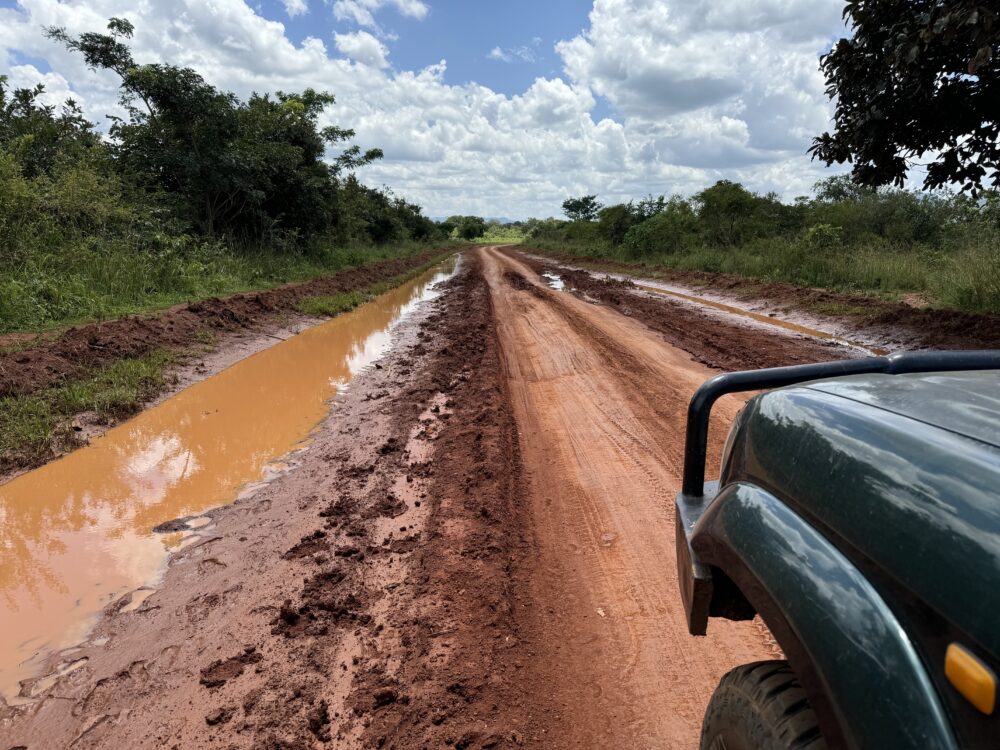
On IOverlander, the gate you should enter is labeled “Kalokudu Gate.” Just follow the signs for Zebra Safari Camp until you reach the park. Maps.me and Google will not be able to guide you accurately, so be sure to follow the signs.
Where to Stay: Nagusokopire Campsite (3.72937, 33.68940)
As I mentioned, this is one of my favorite campsites in Uganda. We were surrounded by cape buffalo at night and saw a stunning sunset. It was peaceful and lovely. The national park will station a ranger in the campsite to keep watch for predators.
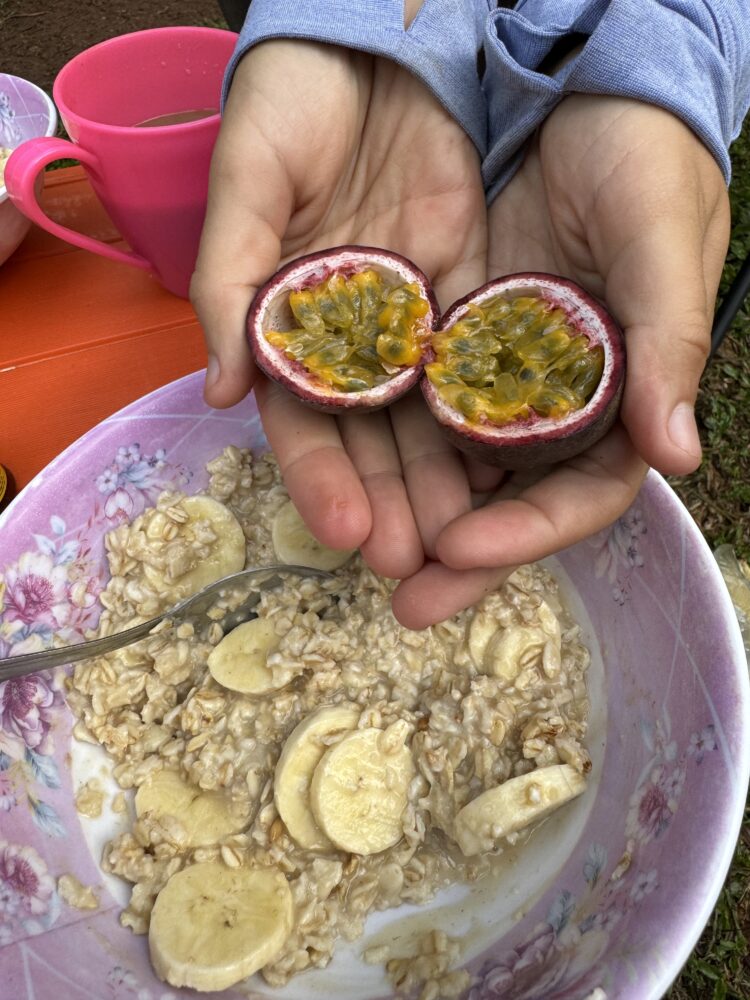
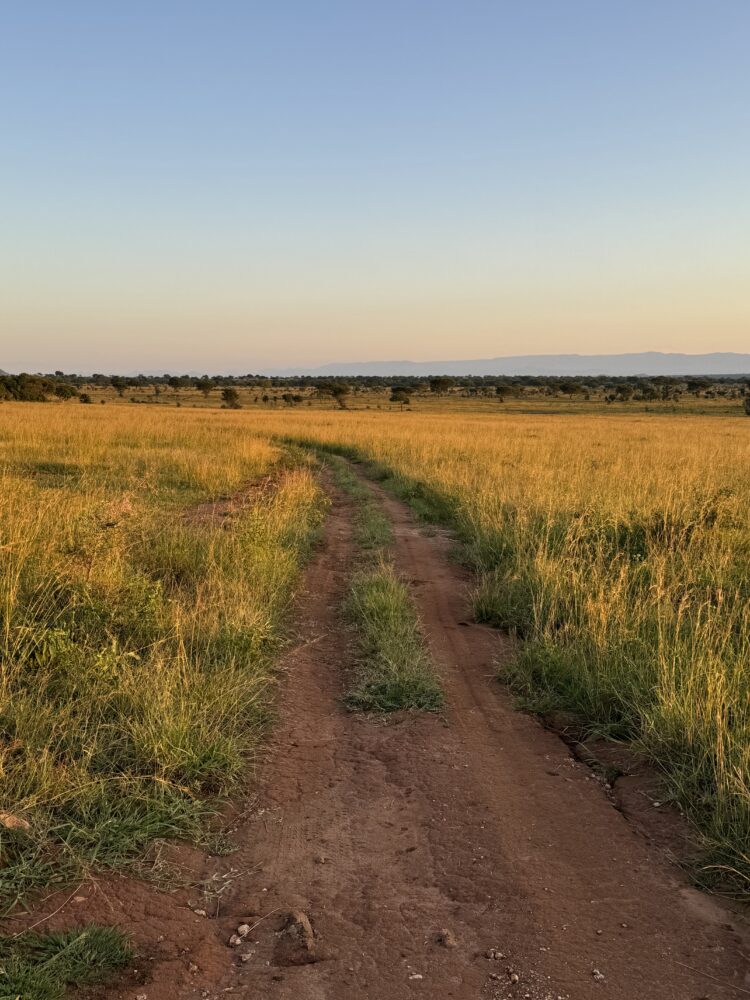
Day Sixteen: Kidepo National Park to Moroto
- 250 KM + 5-6 hours.
I recommend leaving Kidepo today because the park has limited wildlife. However, the spectacular views, idyllic camping, and adventure of reaching it bring all the joy.
Before you go, you should take an early morning drive to the hot springs and scenery near South Sudan. You will need to take a ranger with you on this excursion, which costs about $25 per car.
Exit through the Nataba Gate. The ride to Moroto is not short, and it’s pretty much all dirt. If you want to reach Moroto before dark, I wouldn’t leave later than 1 p.m.
Fuel: The Kidepo area is limited when it comes to fuel. You will need to use small handpump stations in the town outside the park. The next “real fuel” once you leave is in the town of Kotido. Don’t miss these fill-ups.
Where to Stay: Karatunga Camp (2.52727, 34.66523)
I recommend this campsite exclusively for the tours offered. It is jointly owned by a husband (Dutch) and wife (Karamoya Tribe Member), so the money goes directly back to the community. That being said, it costs $40 for two people to camp. If you do not plan to visit the tribal region with them, then you can choose another cheaper stay if you would like to stay in the area. But know that your money is going to a good cause.
Karamoya People: Visiting the Karamoya overnight with Karatunga is the most ethical and immersive way to visit an authentic tribal village in Uganda. I’ll explain our experience in detail in this blog post.
Day Seventeen: Moroto Overnight With Karamoya
- Activity: Karatunga village tour + overnight stay with the Karamoya.
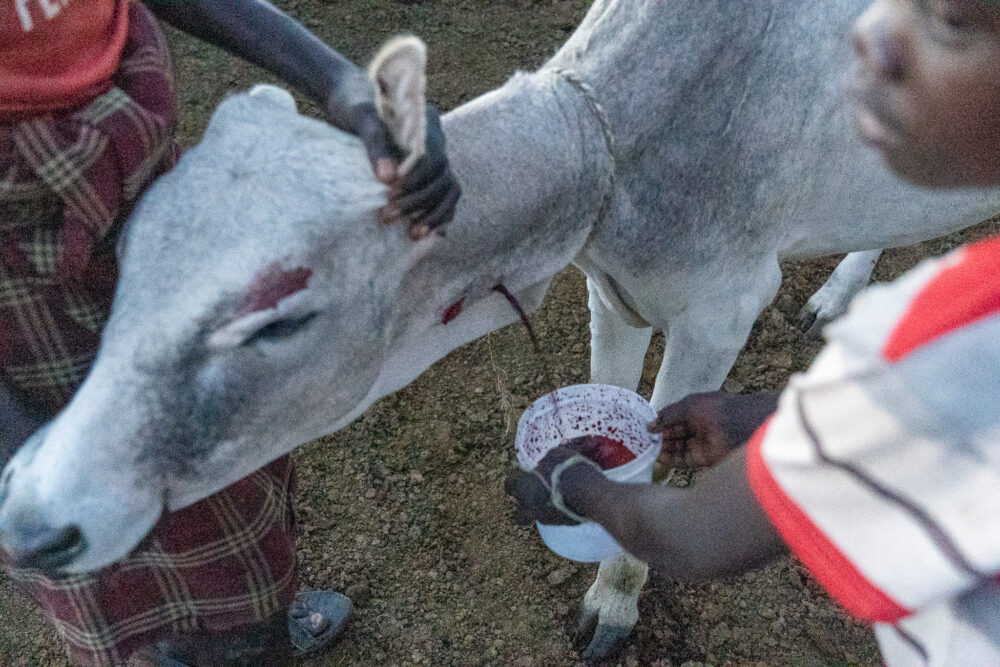
An overnight stay in a Karamoya village typically begins in the late afternoon. I recommend it because it allows you to better experience what life is like for the locals and tends to be a more laid-back visit. Most people only visit for an hour or two during the day. I promise it will be worth the extra money to extend your stay.
Where to Stay: Karamoya Village
A visit to the village overnight and to the nomadic herders of the Kraal cost about $140 for two people.
Day Eighteen: Moroto to Sipi Falls
- 200 KM + 5 hours (be sure to take the route that goes through Nakapiripirit).
I was worried after all we had experienced that Sipi Falls was going to feel touristy. While the town is definitely well-traveled, the falls are actually very impressive.
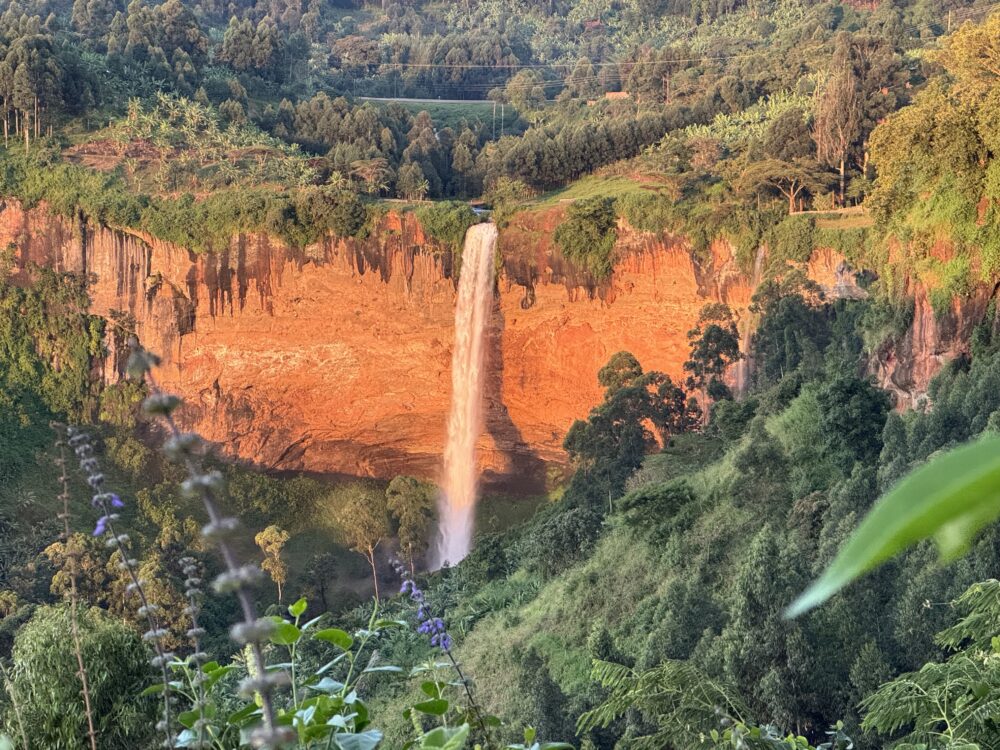
A lot of the drive will be paved, but portions are under construction as of 2024 and are quite rough.
Take the route mentioned above because the roads Google originally recommends as a shortcut, are much worse.
Where to Stay: Moses Sipi Falls Campsite (1.33566, 34.37496)
While the campsite is very basic, there is no better view of the main Sipi Falls than here. Also, you can park your pop-tent with panoramic views of the falls and the valley far below.
Day Nineteen: Sipi Falls Hikes
- Activity: Hike to the three waterfalls within Sipi Valley.
Some people try to hike the falls independently (there are three to see), but you should hire a guide and are technically required to. The trail traverses through the local homes and front yards. The money from your Sipi Falls hike goes to the community. It costs about $20-30 per person.
Where to Stay: Moses Sipi Falls Campsite
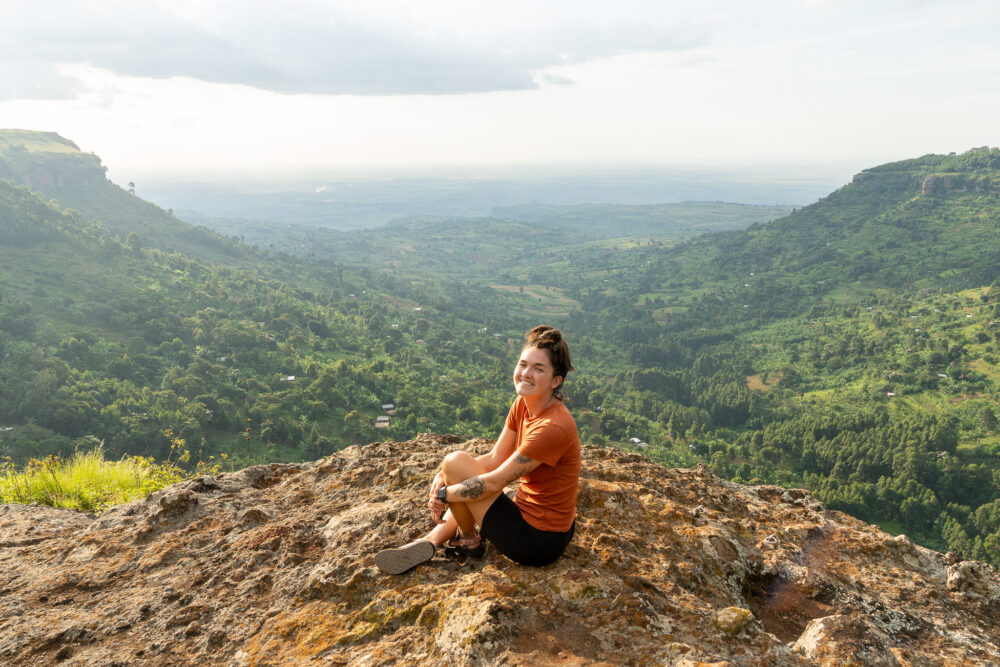
East African Road Trip Route: This is the detour I took to enter Kenya. The road is paved and stunning, the border crossing is easy, and you’re never missing too much by skipping an African city. Check out our full East Africa Route here.
Day Twenty: Sipi Falls to Jinja
- 200 KM + 4 hours
Jinja. A town known for red clay roads, misbehaving missionaries, tasty food, and being the source of the Nile River. Many travelers will White Water Raft here. Personally, we just enjoyed closing out our Uganda road trip with the views and a beer in hand.
Where to Stay: Nile River Camp (0.48262, 33.16470)
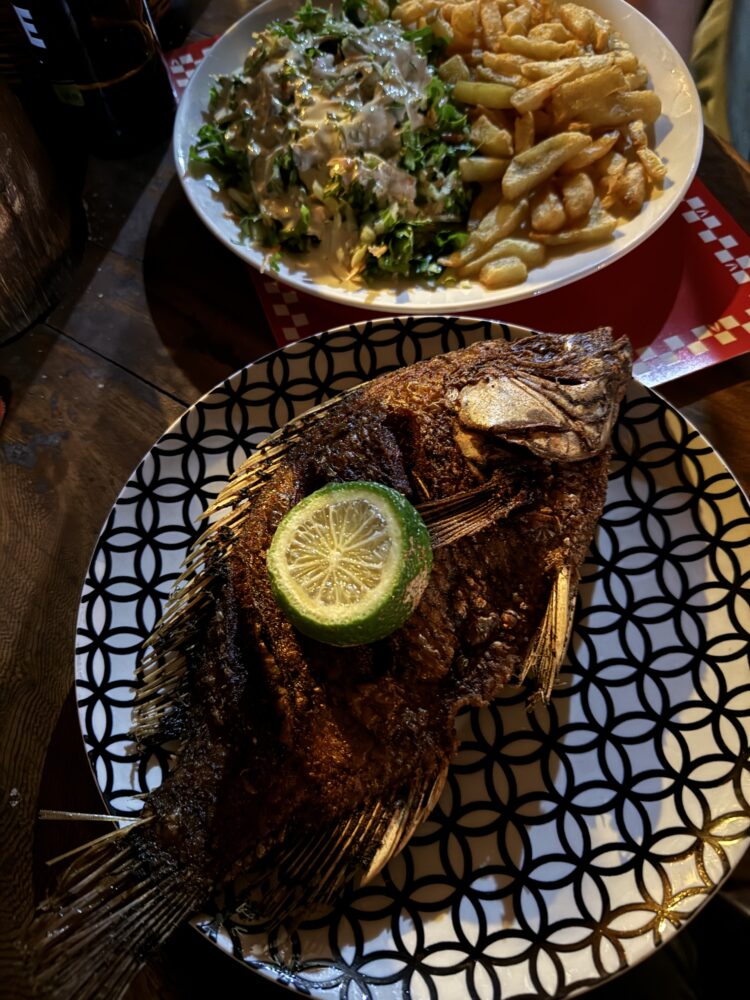
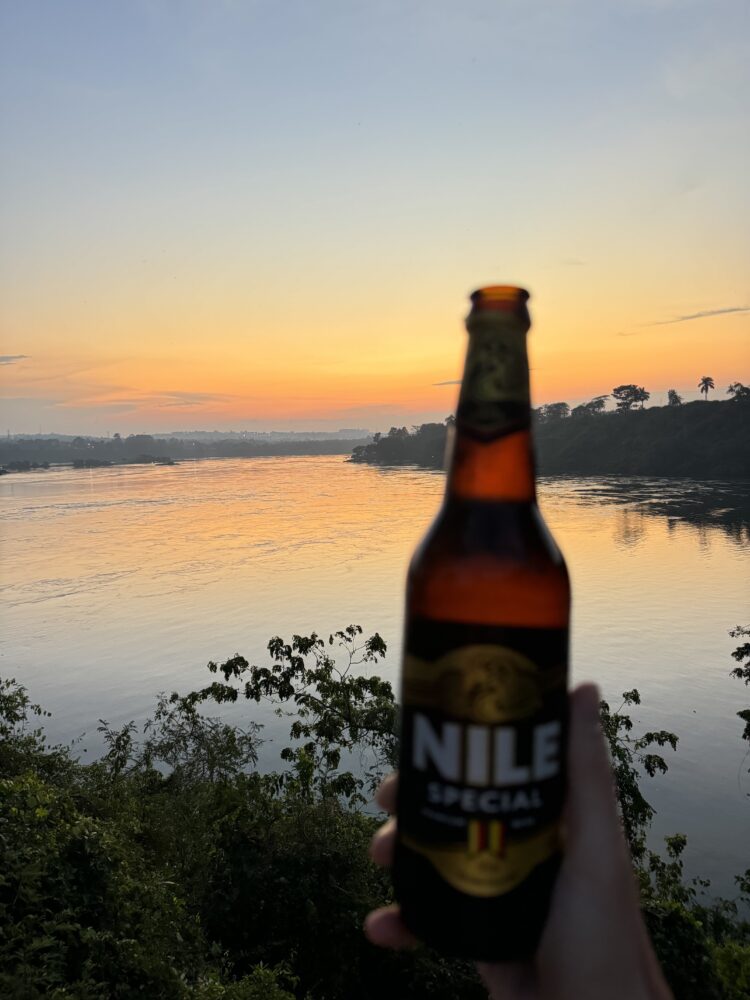
Nile River Camp has an incredible view of the Nile, and the camp is filled with small monkeys and tropical birds. The food here is excellent, too.
Day Twenty-One: Jinja town/attractions
- Activity: White Water Rafting the Nile.
Some places we enjoyed in Jinja were House of Snacks Restaurant for local food, The Deli for international eats & excellent coffee, and the Central Market for exploring.
This also gives you a chance to participate in whitewater rafting excursions or a sunset cruise on the Nile.
Where to Stay: Nile River Camp
Day Twenty-Two: Jinja to Entebbe
- 150 KM + 3.5 hours
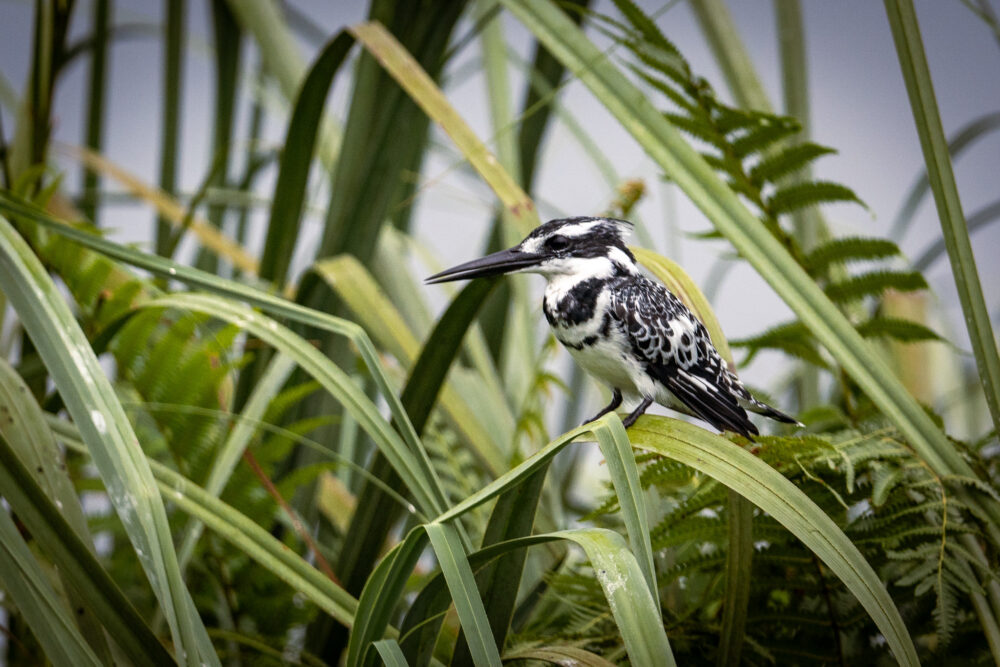
Unfortunately, this drive takes a long time due to the constant truck traffic and inevitable congestion in Kampala. But it’s all paved!
22-Day Uganda Road Trip Map
Here’s our exact recommended self-drive route through the country.
How Much Did This Uganda Road Trip Cost?
East Africa is freakishly expensive. There, I said it. As someone who spends most of their time in South Asia, Asia, and the Middle East, this was shocking to my wallet.
I spent more in any East African country than I did in Japan.
This is mostly because of the “big ticket items” in East Africa: safaris, gorilla trekking, and car rentals. But the regular backpacker stuff adds up quickly, too.
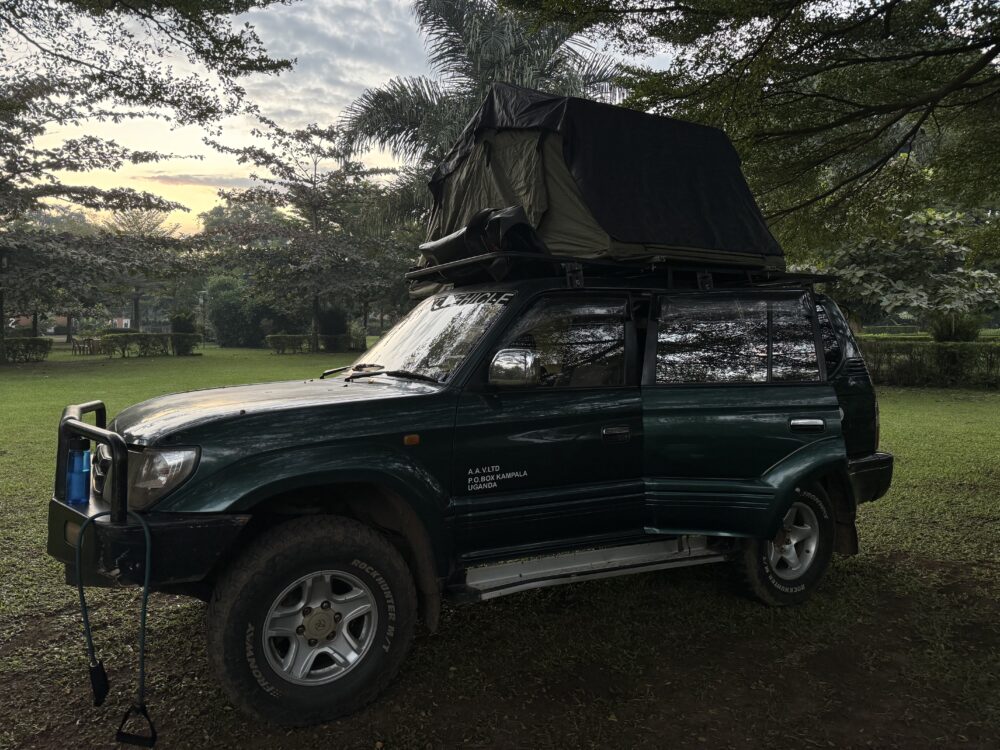
Here are some general prices to keep in mind as of Sept 2025 in Uganda.
Car Rentals: $50-$200 per day. This is the biggest fluctuation because it depends on the company, availability, and type of vehicle. The cheapest option is a 4×4 Rav4. I think you could definitely get away with booking this vehicle for two in the dry season. The only concern is whether they can outfit it with a pop-tent. Most will not. That would mean sleeping on the ground.
Fuel: $1.20 per liter
Meals in a Restaurant: ~$5-10 per plate
Street Food: $2 per Rolex
Camping: $10 per person
National Park Fees: $40 per person for 24 hours
Gorilla Treks: $800 per person
Night Safari: $30 per person
Guides for National Parks: $25 per car for 4-hour drive
Let’s look at our exact Uganda road trip costs. But don’t fret! You can do it for cheaper.
4×4 Car Rental: $2,400 (30 days for us, not 22)
Fuel: $955.24
Groceries: $172.51
Restaurants: $140
Coffee Shops: $42
National Park Fees + Guides: $784.35
Camping Fees: $587
Complete Total: $5,400 for two of us.
It was quite possibly the most expensive travel month we’ve ever had. This doesn’t even include the $1,600 we spent on Gorilla Trekking permits months in advance.
Read More: Is a self-drive safari actually cheaper?
If you were just planning on backpacking, you could obviously cut the car fees and travel on $25 per person bus routes. BUT accommodation in Uganda is tricky. Most places to stay are in the $100 per night range. You’ll pretty much never find one (without going door to door) that is less than $30 a night, and that’s in the largest cities. Near national parks, forget about it.
That just about wraps up all our Uganda road trip recommendations. Before you embark on your Uganda road trip feel free to shoot me a message on Instagram!
Save This Uganda Road Trip For Later?
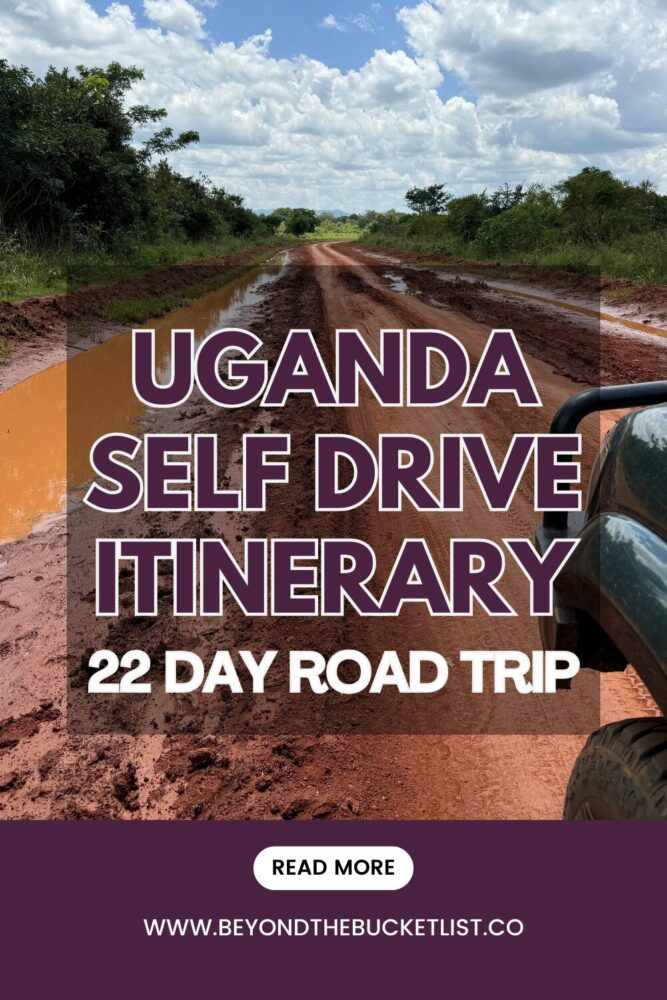
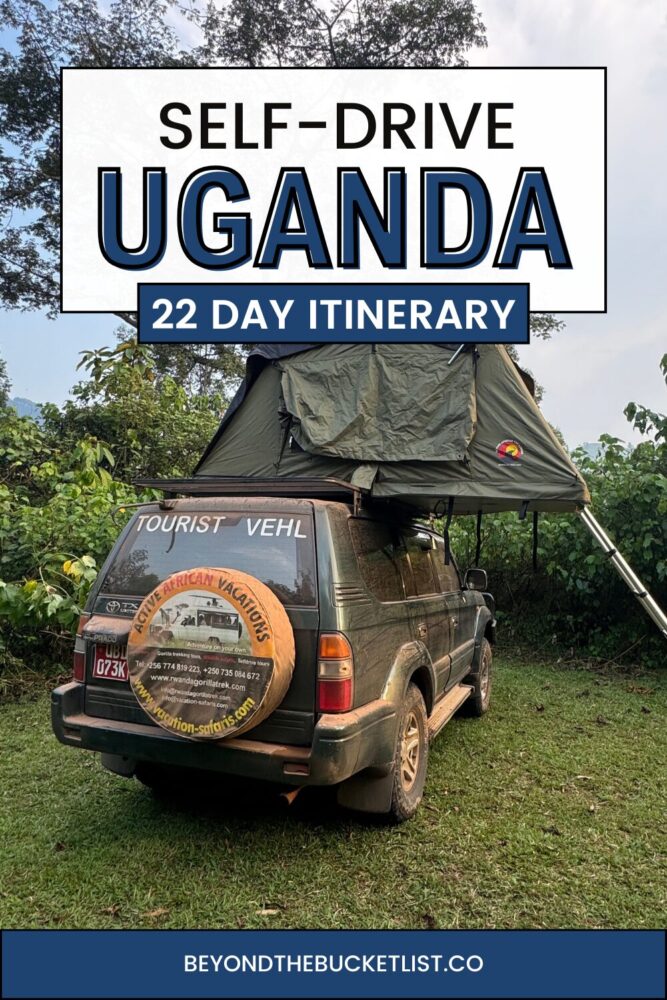
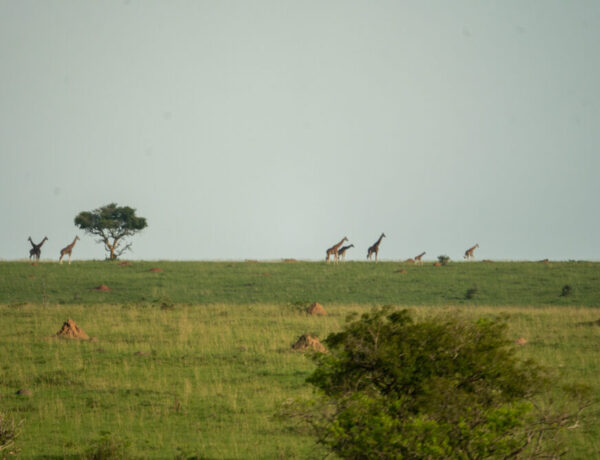
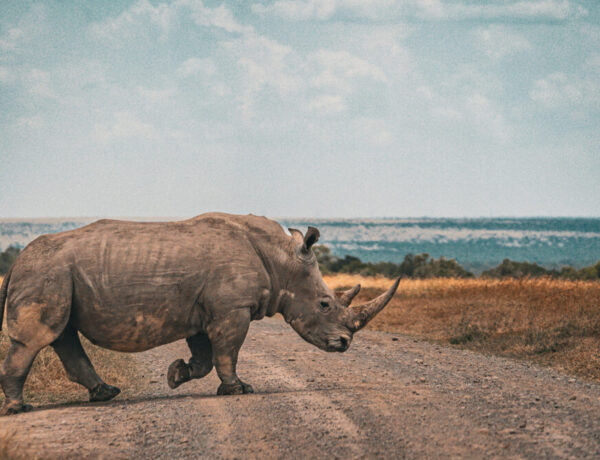
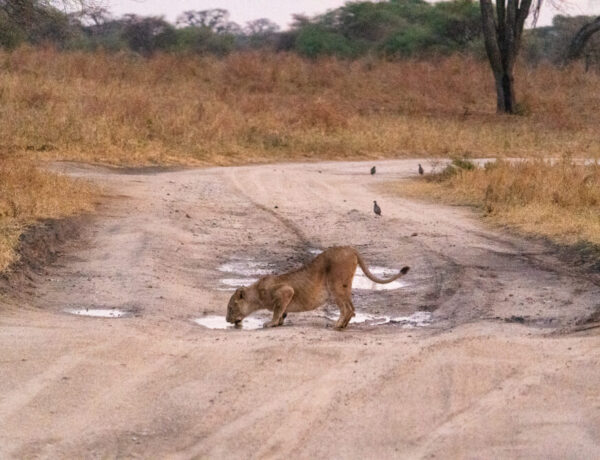
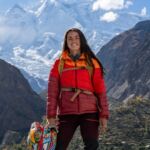

No Comments